We love Japan so much, we decided to spend 6 months here to be able to explore the country and discover the best things to do in Japan. We discovered the major cities, hiked in the mountains, tried cultural activities and even got engaged in Japan!
Japan is unique and one of the most captivating countries in the world. Visit Japan, and you’re guaranteed to fall in love with the culture and history here. To make sure you won’t miss anything, we put together the ultimate list with all the best things to do in Japan like staying in a ryokan, crossing the Shibuya intersection, admiring a bamboo forest and eating lots of Japanese food.
During your time in Japan, you’ll enjoy the tastiest food you’ve ever tried, bathe in a natural hot spring and sleep on tatami floors in the Japanese Alps. Dive deeper into the Japanese culture to learn about tea ceremony and wear a kimono under the sakura trees.
Here are the top experiences you won’t want to miss on your trip to Japan.
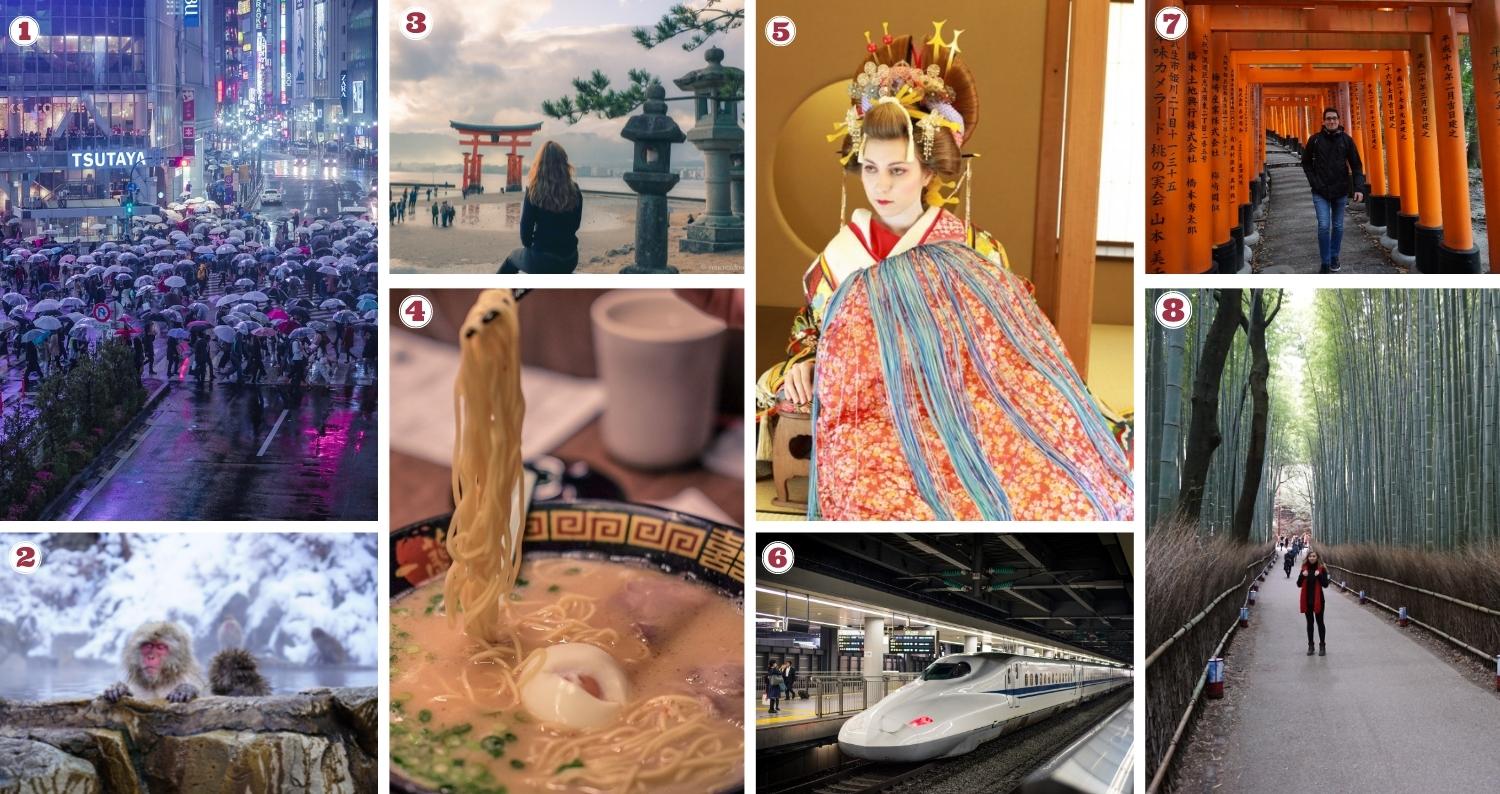
The best things to do in Japan highlights: 1) Cross the Shibuya intersection after dark; 2) See the Snow Monkeys at Jigokudani Yaen Koen; 3) Admire the beautiful Itsukushima Shrine on Miyajima island; 4) Eat traditional Japanese food; 5) Dress in a kimono ; 6) Ride the bullet train; 7) Visit the Fushimi Inari in Kyoto; 8) See the Arashiyama Bamboo forest in Kyoto
Table of Contents
- Cross the Shibuya intersection
- Admire the spectacular Mount Fuji
- Bathe in an Onsen
- Take a trip to Miyajima Island
- Chill with tamed deer in Nara
- See the cherry blossoms
- Eat your way around Japan
- Try authentic Japanese drinks
- Visit shrines and temples
- See a Geisha
- Wear a kimono
- Go on a pub crawl in Tokyo
- See Tokyo from above
- Admire Japanese gardens
- See the million-dollar view in Kobe
- Visit a Japanese Bamboo Forest
- See a game of Sumo
- Stay in a Ryokan
- Have the Kaiseki experience
- See the Snow Monkeys in Nagano
- Visit the kawaii land in Harajuku
- Sleep in a capsule hotel
- Visit Nikko’s waterfalls
- Go shopping for souvenirs
- Go skiing in Japan
- Visit Toyama for firefly squid
- Explore Kabukicho, Asia’s largest red district
- Visit Akihabara, the Electric Town
- Participate in a matsuri (Japanese festival)
- Take the Shinkansen
- Eat in a cheap Michelin star restaurant
- Have a Karaoke night
- See a Japanese fairytale village
- Visit the town of Hakone
- Grab a bento box
- Tips for Japan
- Frequently Asked Questions
Cross the Shibuya intersection
One of the most memorable moments from our first trip to Japan was seeing and experiencing the Shibuya crossing. You’ve seen it featured in so many movies, and it’s one of those iconic places everyone associates with Japan.
Shibuya Crossing is the busiest pedestrian intersection in the world. It gets crossed by over half a million people every single day. Shibuya crossing is uniquely Japanese as it really sets the tone to a wonderful trip to Japan.
For best effect, we highly recommend crossing the Shibuya pedestrian scramble, then seeing it from above.
Here are the best locations to see Shibuya Crossing from above:
- Shibuya Scramble Square – a rooftop observation deck named Shibuya Sky. Fee: ¥2,000 (Adults), ¥1,600 (Students), ¥1,000 (Elementary Students), ¥600 (Children from three to five), Free (Under two). Open: 9 am — 11 pm
- Starbucks (Shibuya Tsutaya) – They are just a handful of chairs overlooking the crossing, so note that this is a very busy spot. Fee: Cost of a cup of coffee (and a lot of patience).
- JR Shibuya Station – This is our favourite location to enjoy Shibuya crossing. Head to the large walk-through which takes you from JR Shibuya Station to the department store Shibuya Mark City.
Don’t forget to check more awesome things to do in Tokyo.
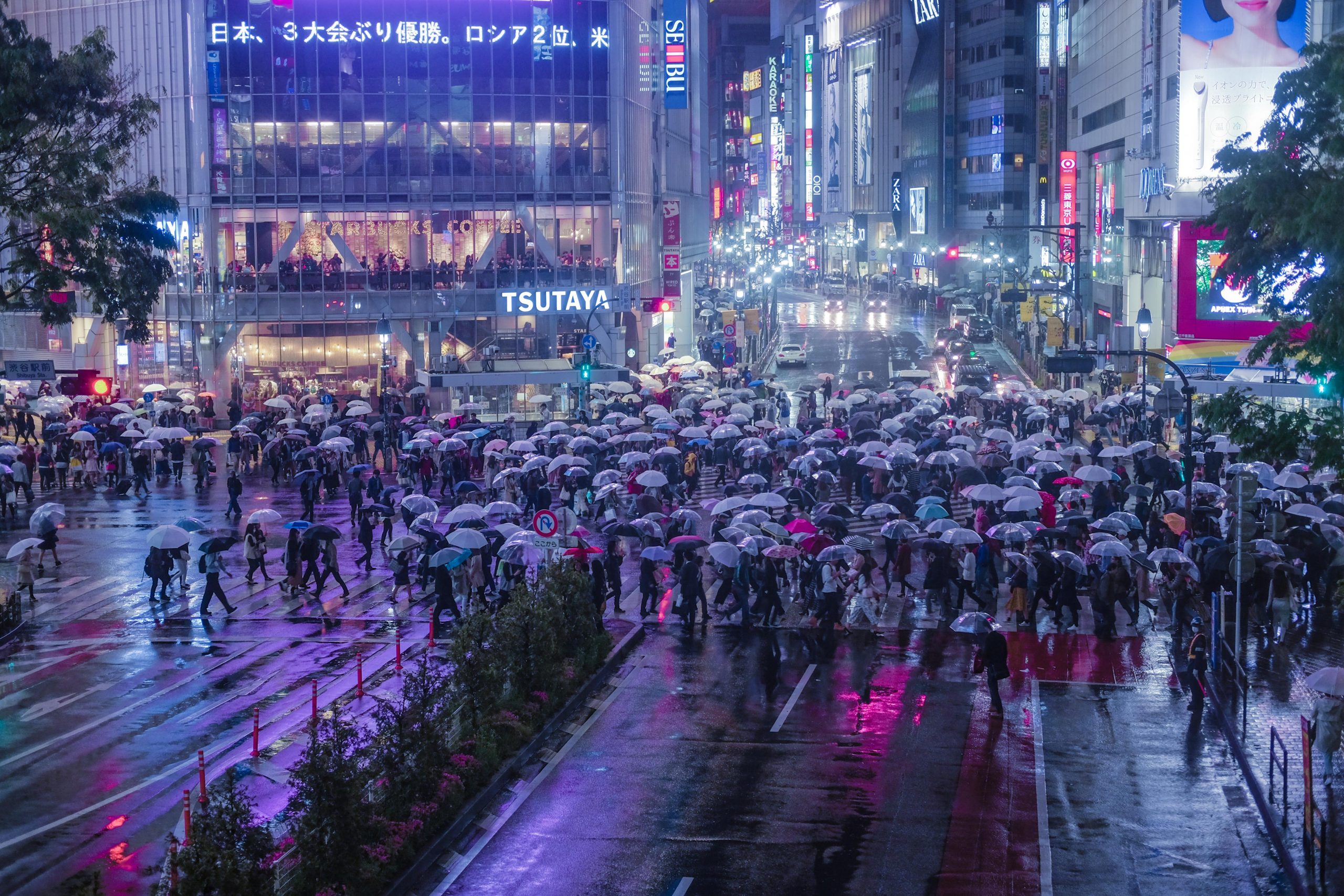
Admire the spectacular Mount Fuji
The most memorable landmark in Japan, Mount Fuji is one of the most important things to do in Japan. But it’s not as easy as you might think. It took us two tries to get a glimpse of Mount Fuji in all its splendour.
The best time to see Mount Fuji is in December and January, as these are the two months when the peak is not covered in clouds. Some days during Spring are also excellent for spotting Mt. Fuji.
There are several ways to see and photograph Mount Fuji in Japan. Stay in a ryokan in Hakone, which is one of the best locations for seeing Mt. Fuji in all its glory.
Alternatively, head to Lake Kawaguchi as a day trip from Tokyo. This is how we got to see Mount Fuji properly, for the first time.
On a clear day, you can spot Mount Fuji all the way from Tokyo’s highest buildings. We saw Mt. Fuji’s tip from Omotesando Plaza on a clear day in Spring.
If you travel from Tokyo towards Osaka on the Tokaido Shinkansen you can also see Mount Fuji from the train around the Shin-Fuji station.
Good to know: The climbing season for Mount Fuji is from early July to early September. If you intend to make the hike, then you must plan your trip to Japan for the summer season.
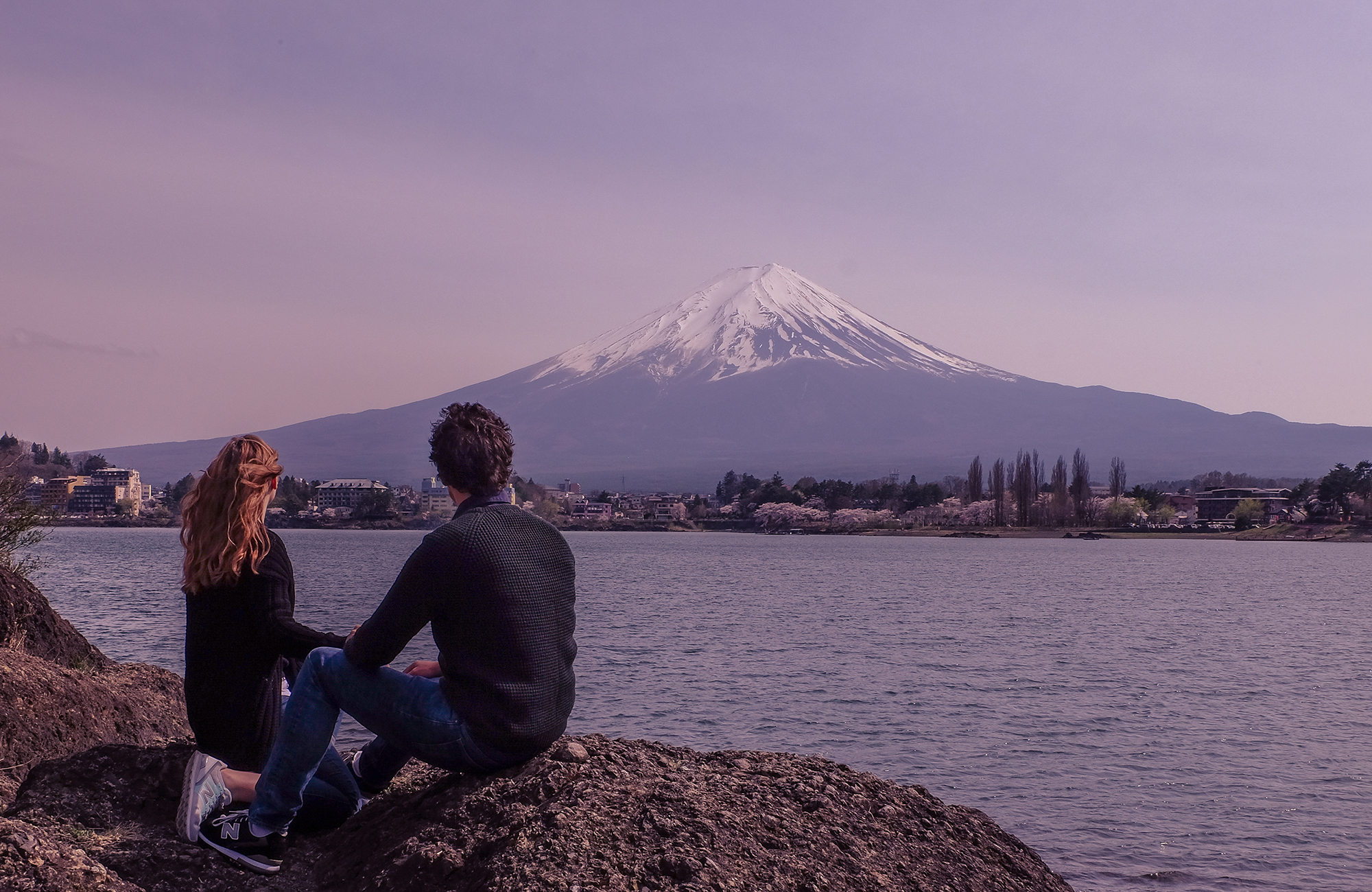
Bathe in an Onsen
You should soak in an onsen on your trip to Japan. An onsen is a Japanese hot spring where you can bathe… naked! We highly recommend it, as bathing in an onsen, the Japanese way, is a unique experience. There are many onsen in Kyoto which are deeply traditional, so you can enjoy not just the hot springs, but a whole cultural experience in Japan.
The first time we tried a Japanese onsen was in the Japanese Alps. Traditionally, onsen are separated by gender to make everyone feel more comfortable. While it may sound strange, bathing naked with others in Japan, is considered totally normal. And once you try it, you will get used to it too.
If you visit Japan in winter, make sure to soak in an onsen as you’ll be surrounded by snow and snowflakes while you relax in the naturally hot springs.
Good to know: Bathing in an onsen is a ritual in Japan and it may seem complicated for the first time tourist. Make sure to familiarise yourself with how to experience an onsen before your visit. Shower and wash your body well before entering the onsen.
Tip: If you don’t like the idea of being fully naked around others, some ryokans allow you to book private time for the onsen. This means you are the only one who can enter the hot springs and have complete privacy. Booking a private time for the onsen can incur some extra charges, but they are well worth it.
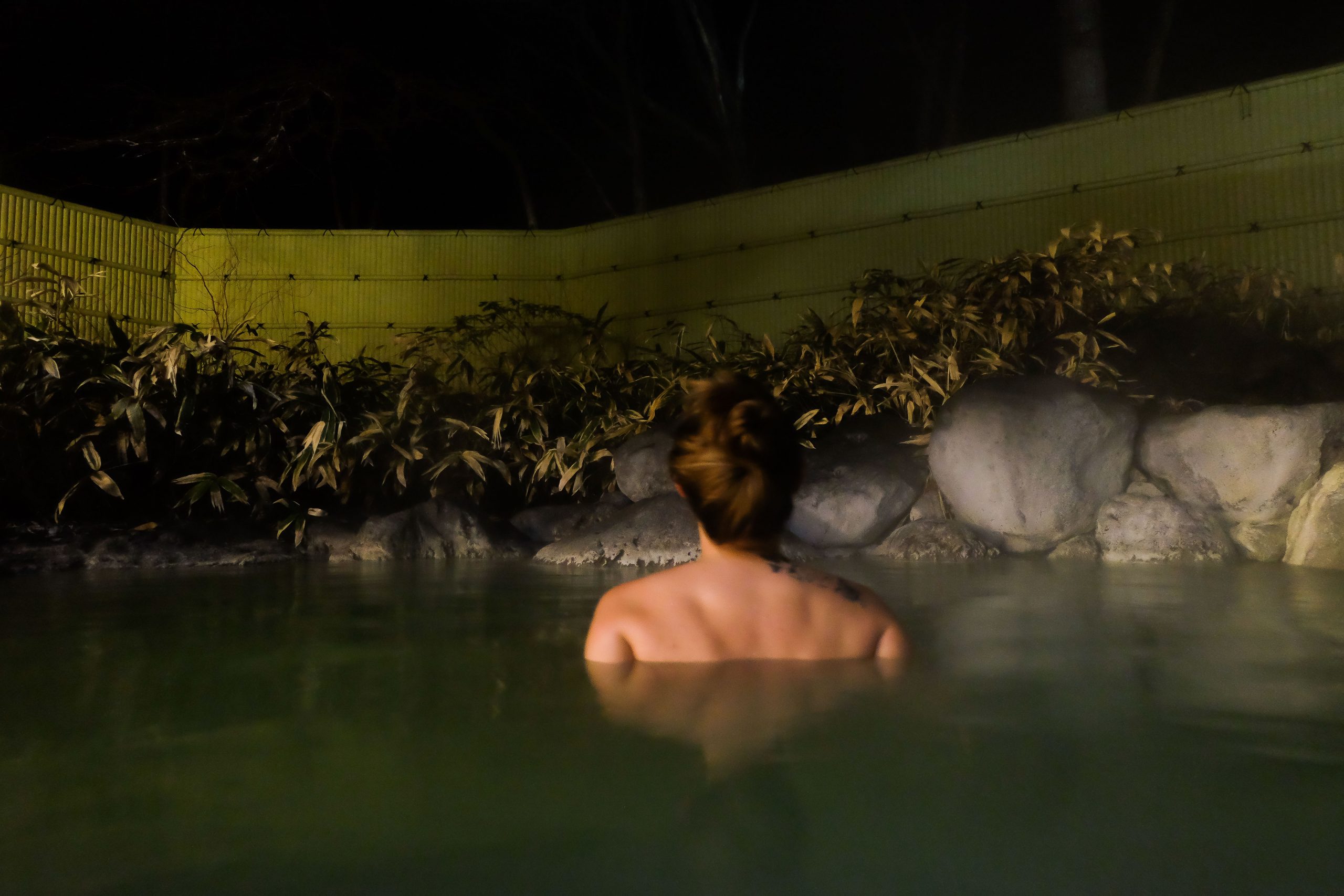
Take a trip to Miyajima Island
Itsukushima Shrine with its iconic floating gate is one of the most visited destinations in Japan. Seeing Miyajima island is one of the top things to do in Japan because at high tide it seems to float on the water.
The moment you approach the island by ferry, you can see the beautiful gate with a backdrop of lush Japanese forests. We highly recommend adding Miyajima to your list of things to do in Japan because there are many interesting attractions, food, and hikes on the island.
Located just off the shores of Hiroshima, Miyajima is easily accessible via JR Ferry. If you have the Japan Rail Pass, this trip is included, and it is free of charge. There are many ferries throughout the day, but unless you intend to sleep on the island for the night, take note of the last ferry back to the mainland.
Most tourists visit Miyajima Island for the Shinto Gate. We are here to tell you that there are a lot of other cool things you can do as well.
Walk on the Kiyomori-dōri and sit down to eat local oysters, a speciality this island is well known for. For dessert, have the Hiroshima Momiji Manju, an authentic Japanese soft cake which is maple leaf-shaped.
Don’t forget to purchase special biscuits from the local vendors made for the wild deer. Once you get to the Itsukushima Floating Torii Gate, you will see many Japanese deer coming close to tourists. It’s wise to have something already prepared for them.
Insider Tip: If you want to see the Itsukushima Torii Gate in its apparent floating state, you will need to plan your trip during the high tide. If you wish to walk close to the Torii gate, you will want to plan your trip during low tide. You can find the official tide timetable here.
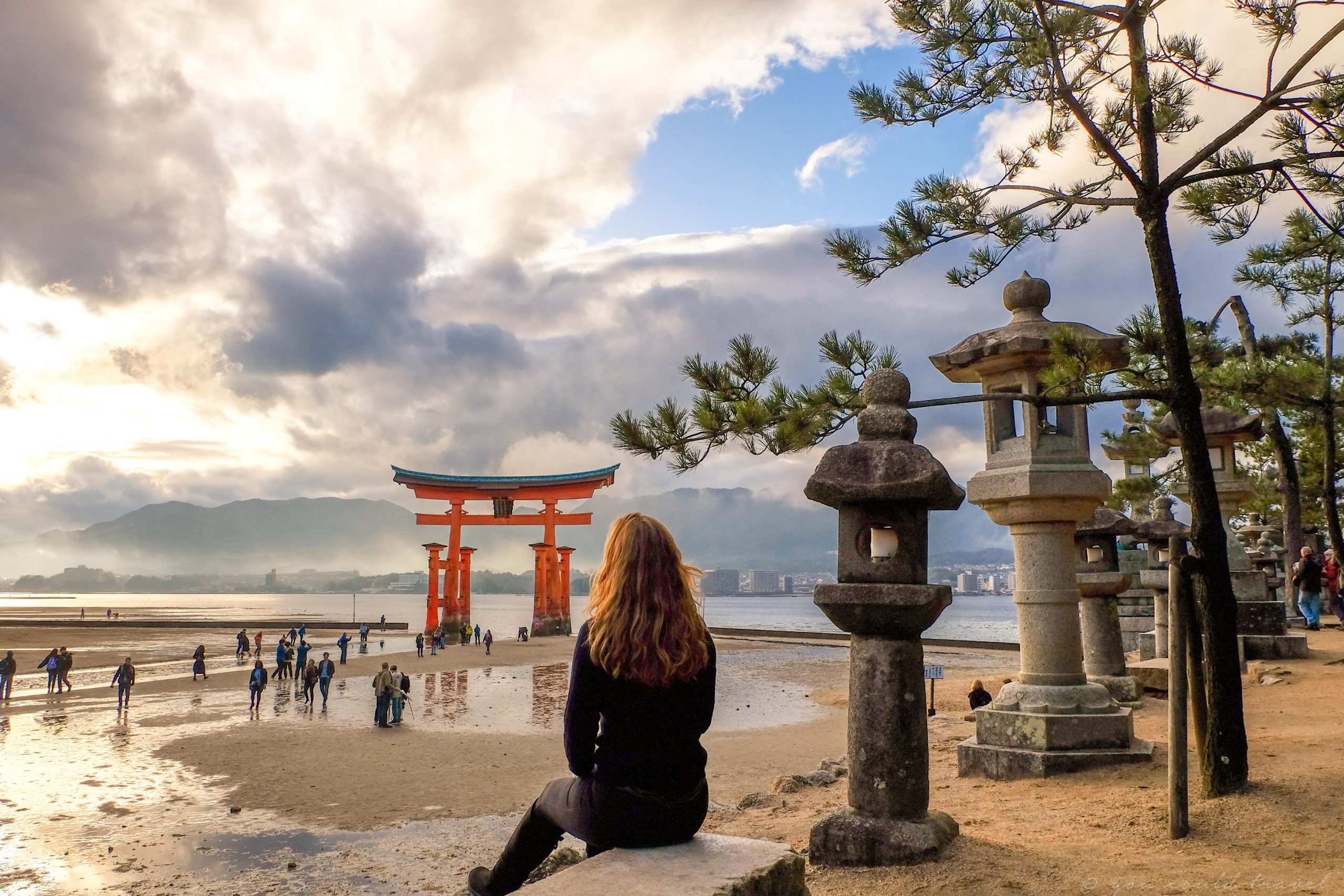
Chill with tamed deer in Nara
Visit Japan’s oldest capital city, Nara, to see the famed Tōdai-Ji Temple and observe the myriad semi-tamed deer residents.
Admire the deer and take adorable pictures with them. If you wish to feed them, purchase rice crackers (shika senbei), from the local vendors. You will notice that the moment they see the food, the deer will bow! They learnt this incredible behaviour from residents which shows how smart these animals are!
As we fed the Nara deer in the past, we have some recommendations on how to behave around them. Make sure to keep calm around the deer and treat them with respect. Don’t get too close as they are still wild animals. Don’t panic if the deer follow you for more food, simply ignore them and eventually, they will leave. Keep leaflets and magazines away from reach, as occasionally, they will try to eat it.
Good to know: The deer rice crackers are made from wheat flour and rice bran, with no added sugars. These crackers are a registered trademark of the Foundation for the Protection of Deer in Nara.
There are many things to do in Nara, including visiting Horyuji Temple which is the world’s oldest surviving wooden structure. It’s also one of the oldest temples in the whole of Japan.
Local Tip: From Nara Park take the hiking trail towards Mount Wakakusa. Will can stop at the Kasuga-Taisha along the way to catch your breath. Continue all the way to the top of Mount Wakakusa for some of the most incredible vista points of Nara from above.
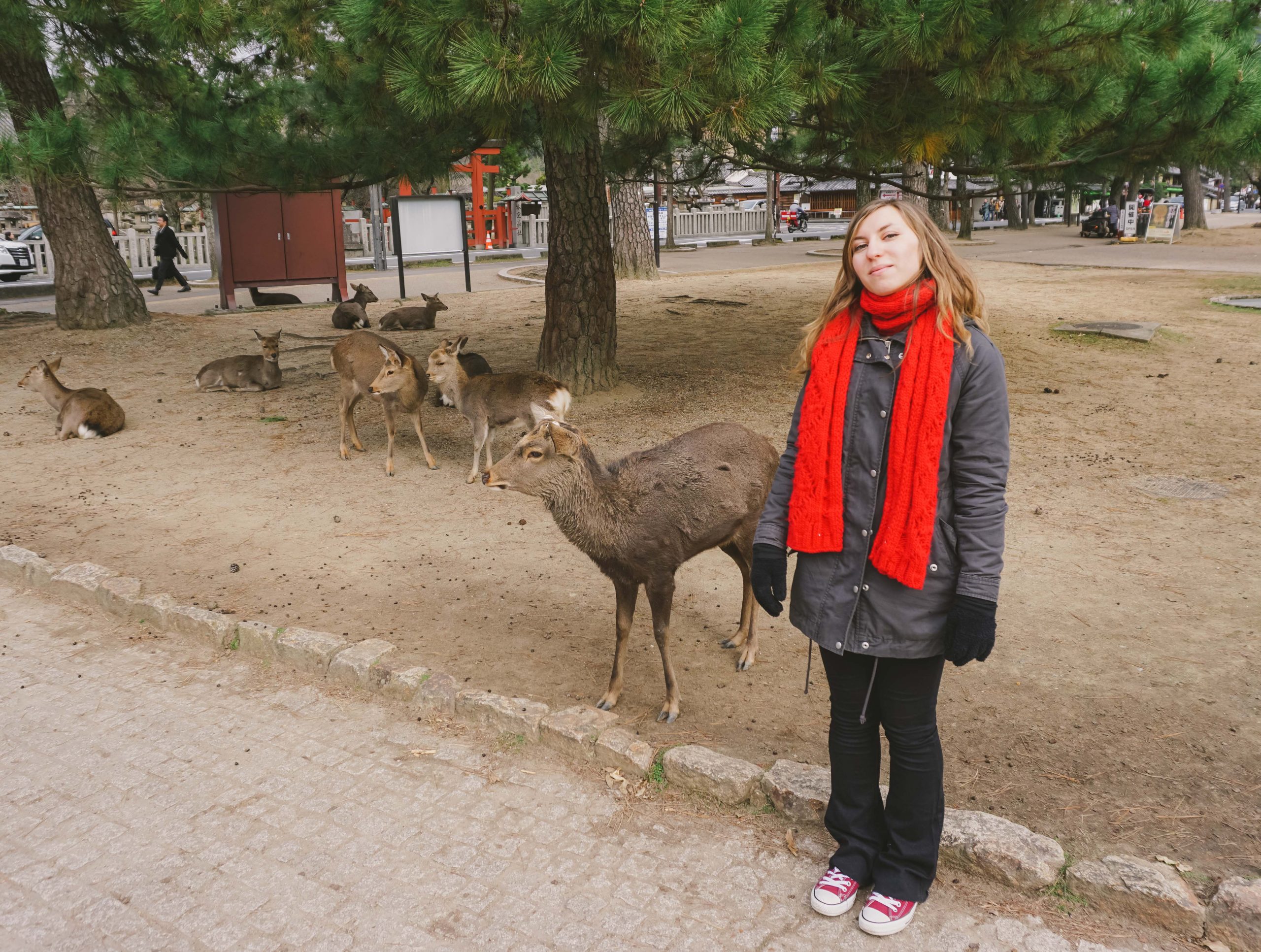
See the cherry blossoms
Each year, Japanese people gather to admire the Sakura blooms because in Japan, they symbolise human life, transience, and nobleness.
While the Sakura season is the most beautiful time to visit Japan, it’s also the most crowded. If you are not bothered by crowds, then grab your camera because the cherry blossom season in Japan really is the most beautiful in the world!
We put together a comprehensive guide to the sakura season for next year, so make sure to read it and start planning your trip to Japan as soon as possible. We highly recommend the following locations for hanami viewing.
- Yoshino – The government of Japan named Yoshino as the best cherry blossom spot in the country, and we understand why. See over 30,000 Sakura trees which make the Kii Mountains look as if they are floating.
- Himeji Castle – Marvel at the White Heron Castle with its elegant walls surrounded by delicate sakura blooms.
- Ueno Park – Ueno is one of the most popular places to spot gorgeous cherry blooms in Tokyo. Arrive early to get a good spot for a picnic under the trees.
- Fuji Five Lakes – We highly recommend spending a day in an onsen while admiring the cherry blossoms with stunning views of the Mount Fuji.
- Philosopher’s Path – Walk the path lined with cherry trees and stop along the way to visit and admire the different shrines and temples of Kyoto.
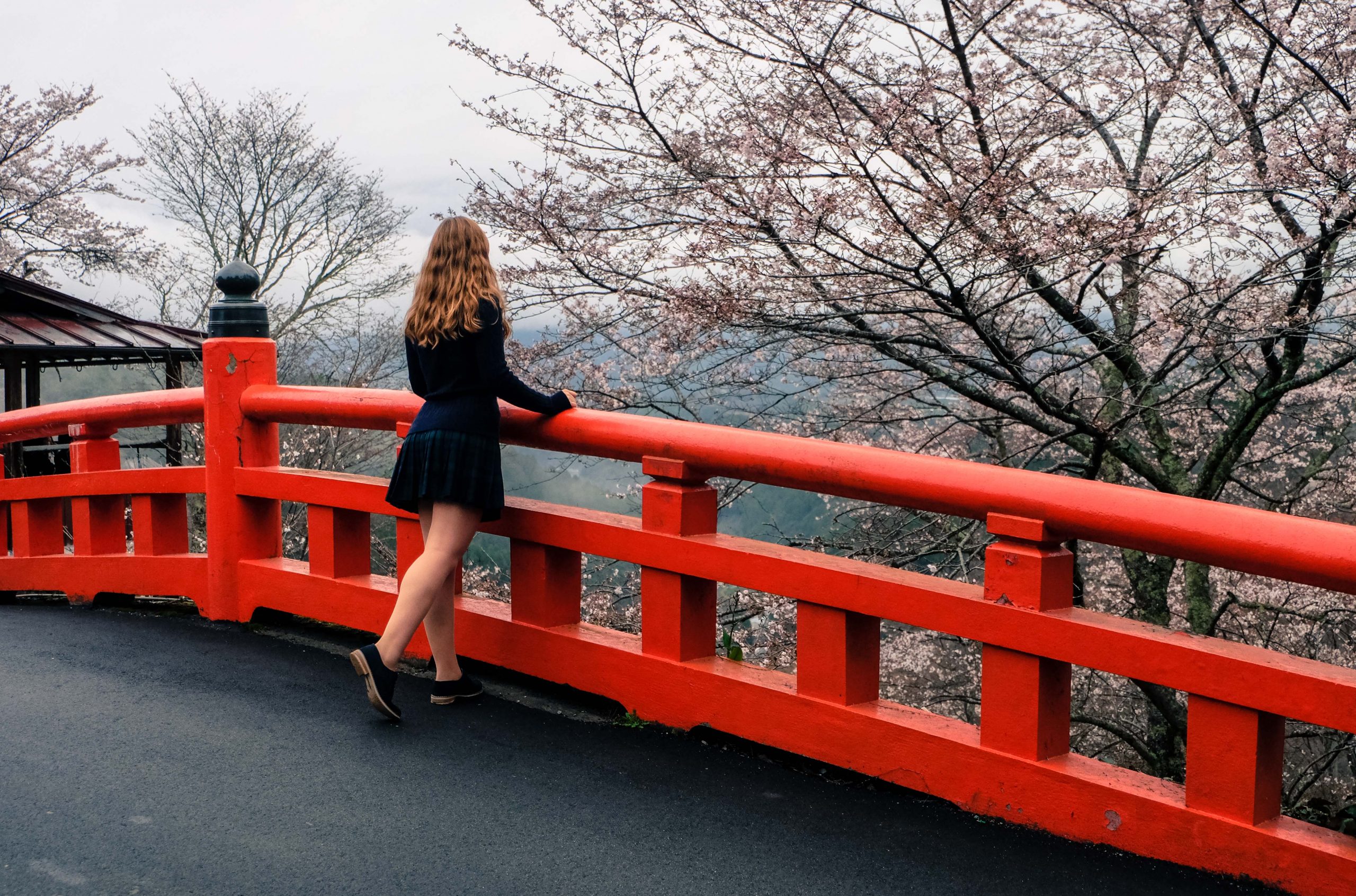
Eat your way around Japan
There is no surprise that many people travel to Japan for the food. Japanese food is one of the best in the world and with so many Michelin star restaurants, it’s often called the world’s kitchen.
Trying all the various foods and dishes is by far one of the best things to do in Japan and that’s because the food tastes amazing and looks great. The Japanese culture is all about food and using the freshest ingredients to create edible masterpieces.
Street food is incredible too: try mochi, dangos, and all the skewers. Indulge in matcha treats, sakura cakes and octopus balls. Food stalls usually specialise in one type of dish, made to perfection.
Eat sushi from a sushi train restaurant but also try it in a high end Japanese restaurants. Try as much ramen as possible, often called the soul food of Japan. Japanese cuisine is based on rice and miso soup with a large emphasis on seasonal ingredients.
We recommend trying seasonal food when visiting Japan. Here are some examples of great seasonal dishes:
- Fugu – Puffer fish is especially delicious during winter when served as raw fish sashimi. To be able to sell fugu, chefs need to train for years to ensure fugu is safe for consumption. Try fresh kaki (oysters), also best in winter.
- Nishin and Mebaru – Nishin (herring) and Mebaru (rockfish) are ideal in a bento box with delicious rice on the side, served in a bento box. Take it with you during the hanami celebrations in Spring time.
- Unagi and Uni – Grilled unagi (eel) with cold noodles are especially popular in the summer. Uni (sea urchin) is seasonal, ideal as sushi.
- Iruka and tako – Iruka (salmon roe) and tako (octopus) served with kabocha (Japanese squash), kuri (chestnuts) and ichijiku (figs). Matsutake (mushrooms) are especially popular in the autumn.
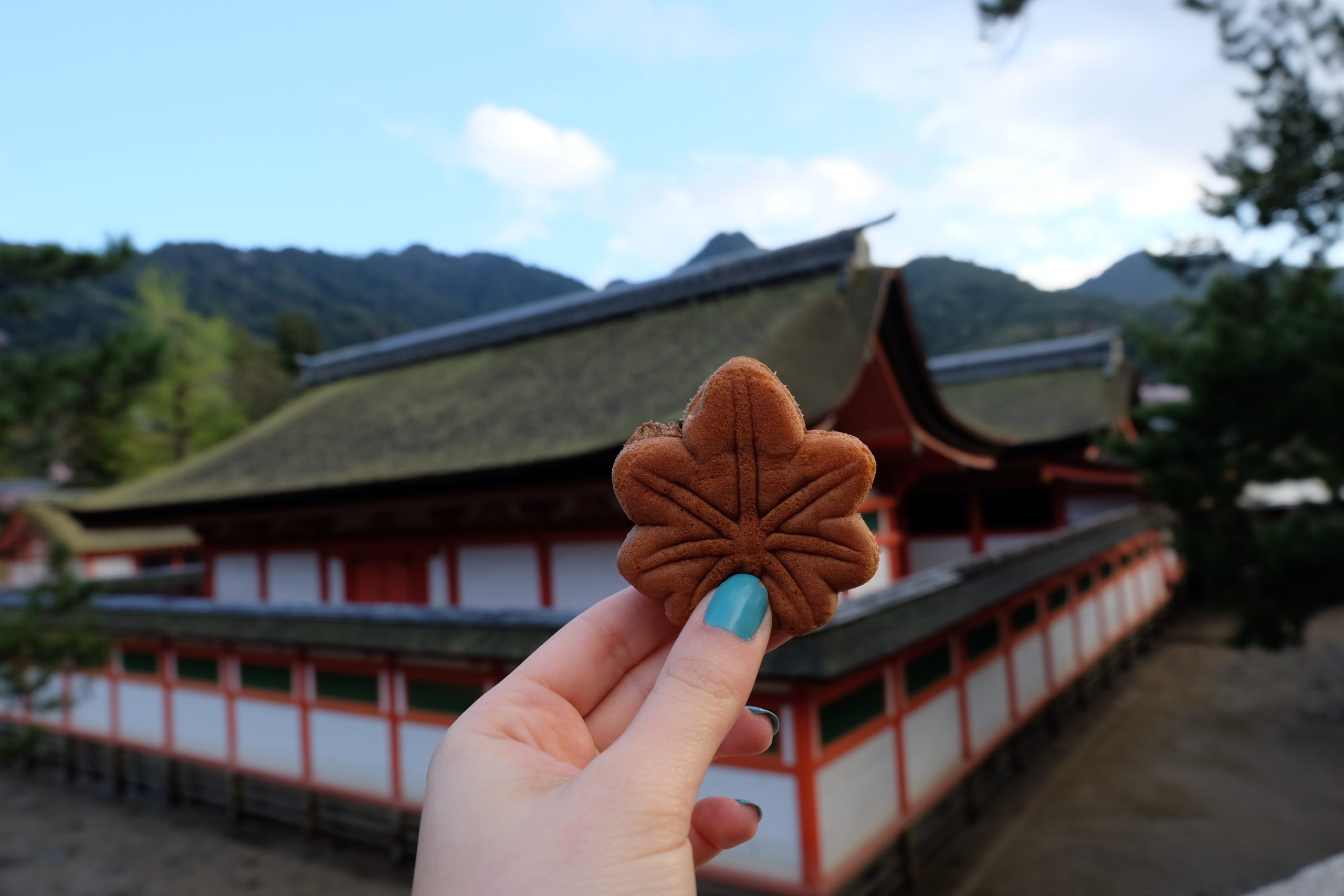
Try authentic Japanese drinks
Say kanpai and try one of the many authentic Japanese drinks like sake, matcha tea, amazake and shochu.
Start with a traditional Japanese tea ceremony and learn about the history of green tea, then make your own delicious matcha. Enjoy the bitter-sweet taste of matcha tea with a side of wagashi, a delicate Japanese sweet.
We recommend booking a tour with a local guide to experience many local drinks. Alternatively, purchase all the drinks from a vending machine to try as many options as possible. You’ll get hot and cold teas, specialised coffees and pop.
Our personal favourite drinks to try in Japan:
- Sake – Sake is an alcoholic beverage made from fermenting rice. Sake is Japanese rice wine. For the best sakes, try Hakkaisan Tokubetsu Junmai or Dassai 45.
- Local beer – Venture beyond the well-known brands like Asahi, Sapporo, and Kirin and try local brews from smaller pubs in places like Memory Lane or Golden Gai in Tokyo.
- Japanese Whiskey – One of the most popular Japanese drinks is local whieky. The most popular whiskey in Japan is Yamazaki. While Japan’s distilleries adhere to the traditional Scotch methods, the seasons in Japan have a significant impact on the maturation process.
- Japanese tea – Try matcha (powdered green tea) during a tea ceremony but also order other varieties like sencha, genmaicha and hojicha, our absolute favourite. Many restaurants serve a glass of cold water and a cup of hot tea entirely free of charge with your meal.
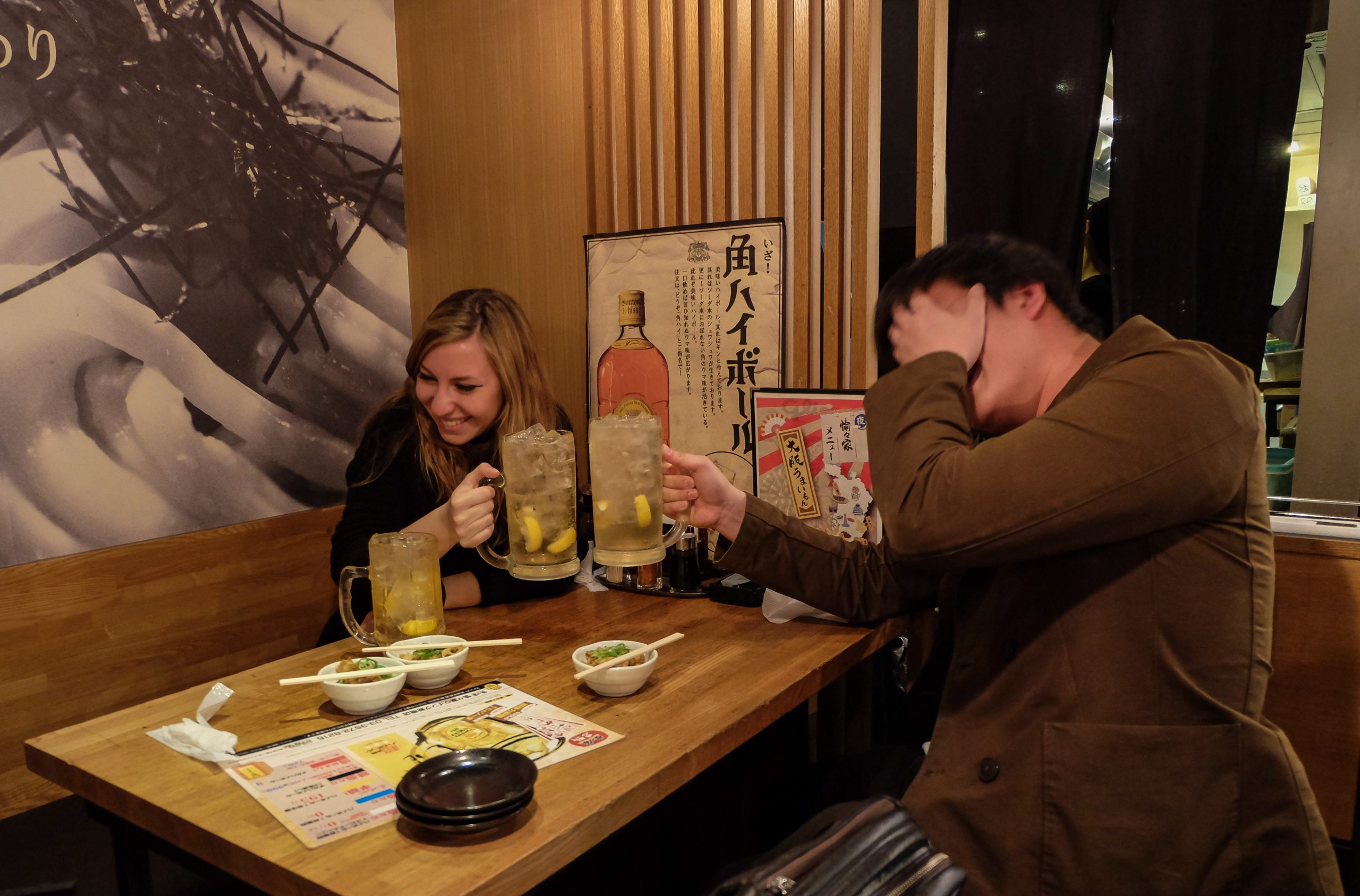
Visit shrines and temples
There are many temples and shrines in Japan. Some like Itsukushima Shrine, Hōryū-ji, Kinkaku-ji are Unesco world heritage sites and very popular among locals and tourists alike.
Confused by the difference between temples and shrines? Temples are Buddhist while Shrines are Shinto. Temples will have a large incense burners and Buddhist statues while shrines have a large Vermillion torii in front.
Good to know: Ema are wooden wishing plaques you can find in many shrines all around Japan. Purchase one, write your prayers and wishes and leave them behind so the kami (gods) take care of them. Alternatively, purchase one as a souvenir from Japan.
A few of our favourite temples and shrines we highly recommend you visit in Japan:
Fushimi Inari Shrine
Perhaps the most famous sights in Japan, Fushimi Inari Shrine is renowned for its thousands of vermilion torii gates. Experience the whole path by hiking through the gates to the top of Mount Inari.
Best tip: Make sure to stop at the Yotsutsuji intersection along the trail for the most incredible sunset colours. This is the best photo opportunity from the Fushimi Inari Shrine.
Good to know: The Fushimi Inari trail is a circular hiking experience on the mountain. It gets very busy with tourists, but it’s a unique activity you must-try during your trip to Japan. We recommend visiting Fushimi Inari either first thing in the morning or just before sunset.
The hike to the summit of 233m Mt. Inari-san is an arduous hike. For this activity, you should bring water and snacks with you so you can refuel during the pilgrimage. Throughout the hike, there are small stop points where you can relax or pay your respects to the smaller shrines.
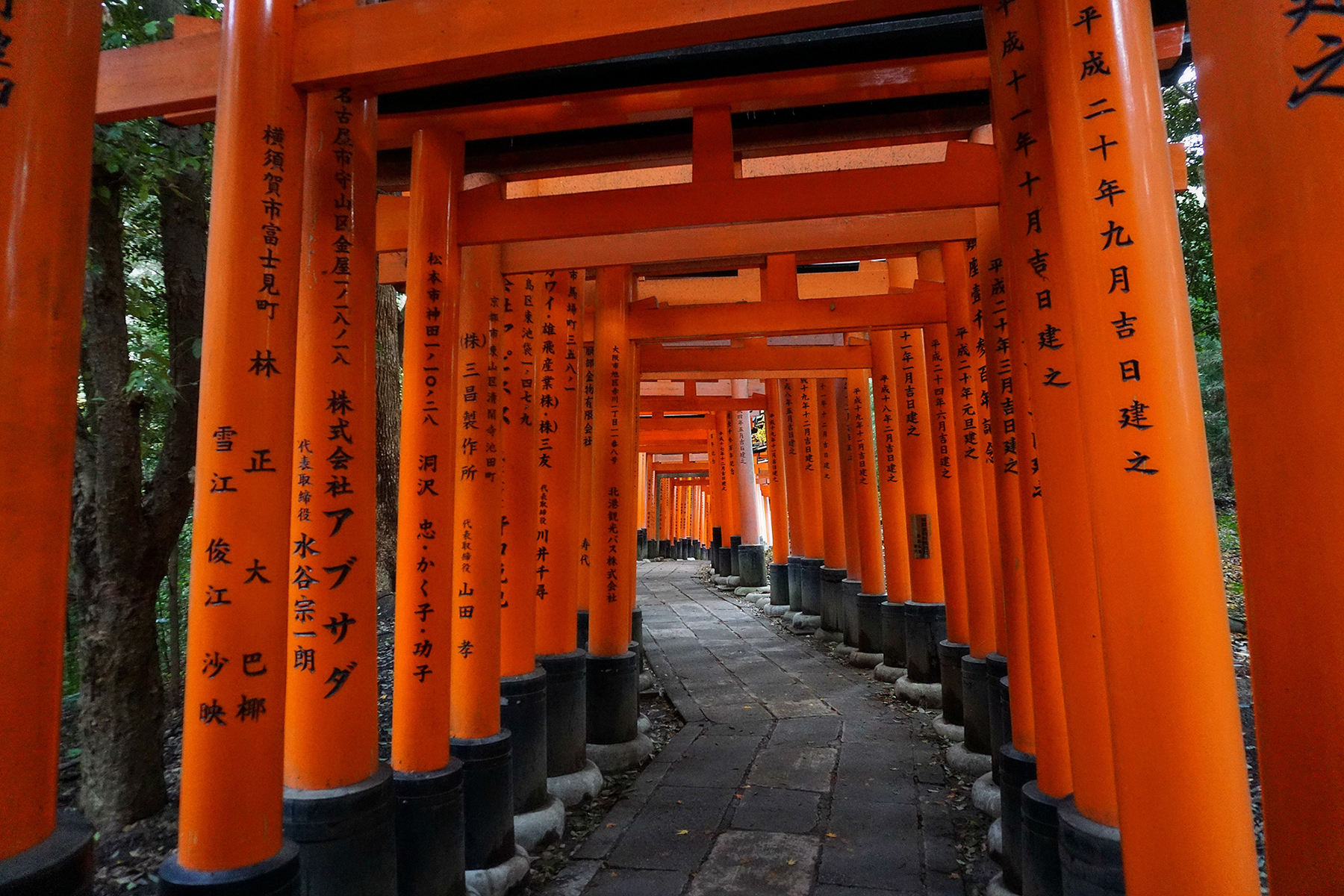
Kinkaku-ji Temple
By far one of the most popular Zen Buddhist temples in Japan, Kinkaku-ji, or the Golden Pavilion is a must see in Japan. The name Kinkaku is derived from the gold leaf that the pavilion is covered in. The temple is actually made of gold.
While you cannot go inside the temple, there will be a managed queue to ensure you can admire the temple in the perfect spot. Allocate around 30-60 minutes for seeing the temple. The entry fee is ¥400.
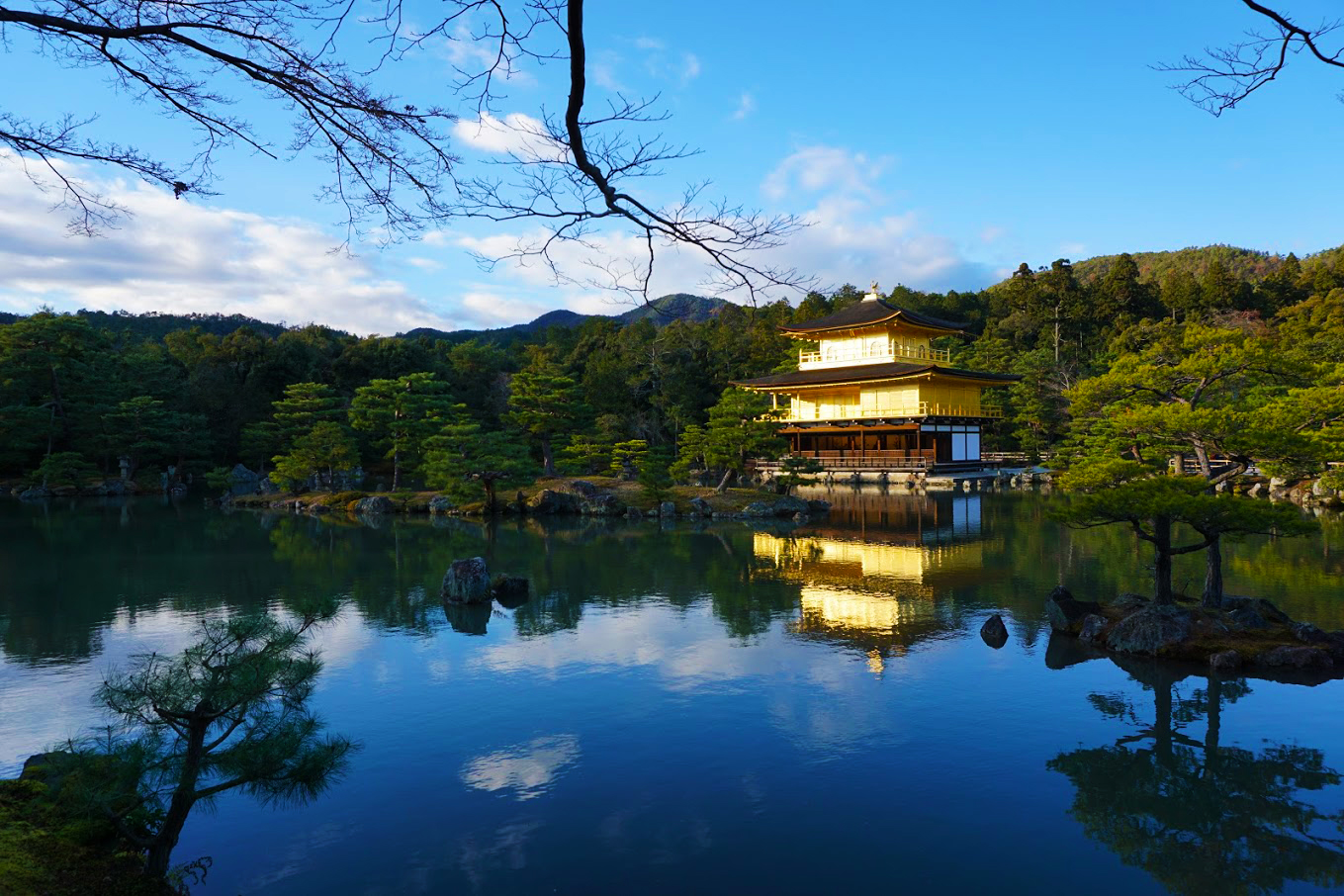
Senso-ji in Tokyo
This is one of our favourite temples because it’s the first famous sight we saw in Japan on our first visit. Still slightly jet-lagged, we ventured to Senso-ji first thing in the morning.
Senso-ji is the oldest temple in Tokyo and is incredibly popular among tourists and locals alike. Note that the grounds to the temple are open 24/7 which means you can visit at any time of the day or night for impressive photos.
There is no entry fee to Seno-ji, although you can always draw an omikuji, a fortune-telling paper strip, for ¥100.
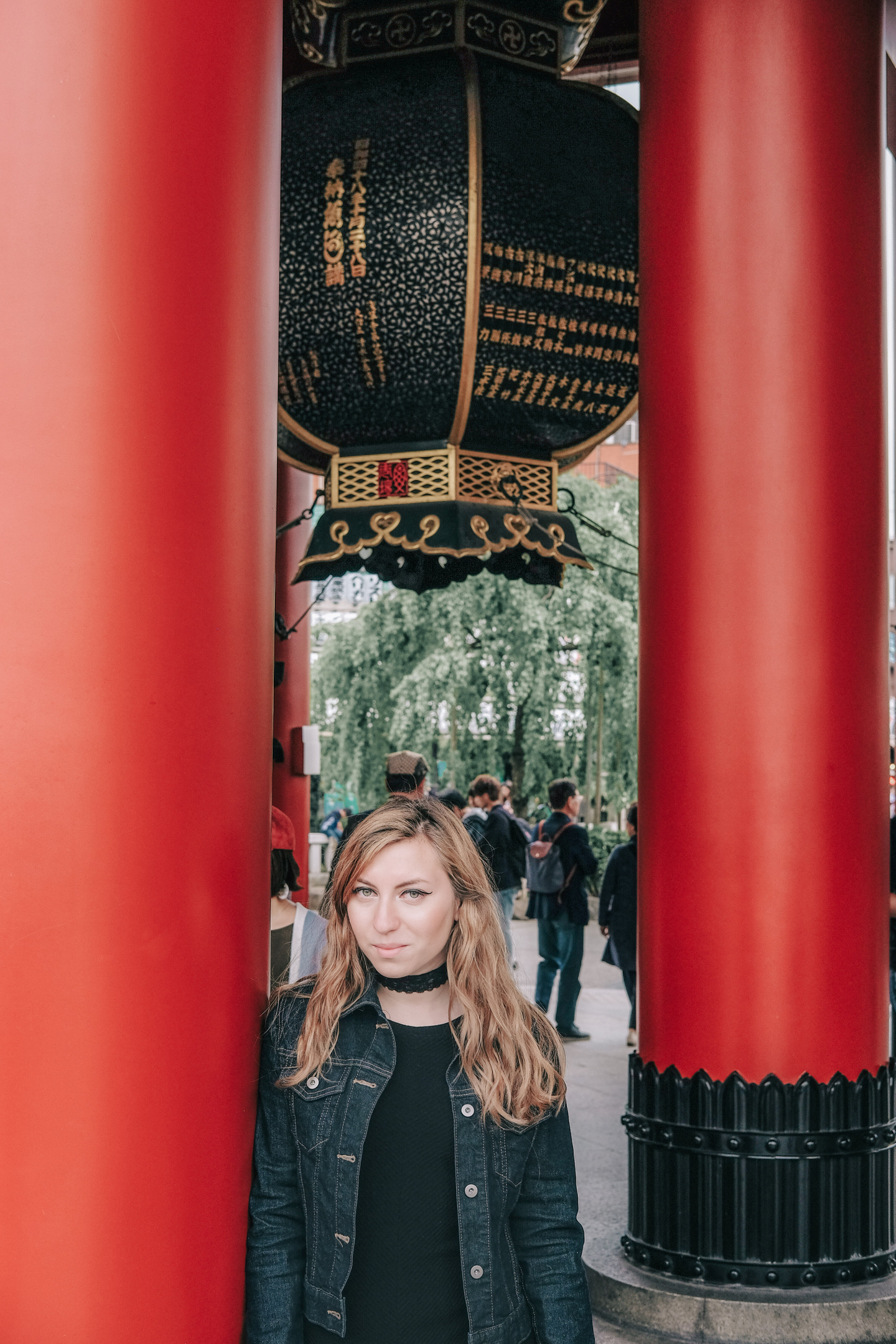
Byodo-in
A Unesco world heritage site, Byodo-in is the Temple of Equality and well known for its striking Pheonix Hall. We highly recommend a visit to Byodoin, which is located in Uji, famous for its green tea. Legend has it that the first tea plant was brought over from China to Uji.
Did you know: There is a copy of the Byodo-in Buddhist Temple in Hawaii, USA.
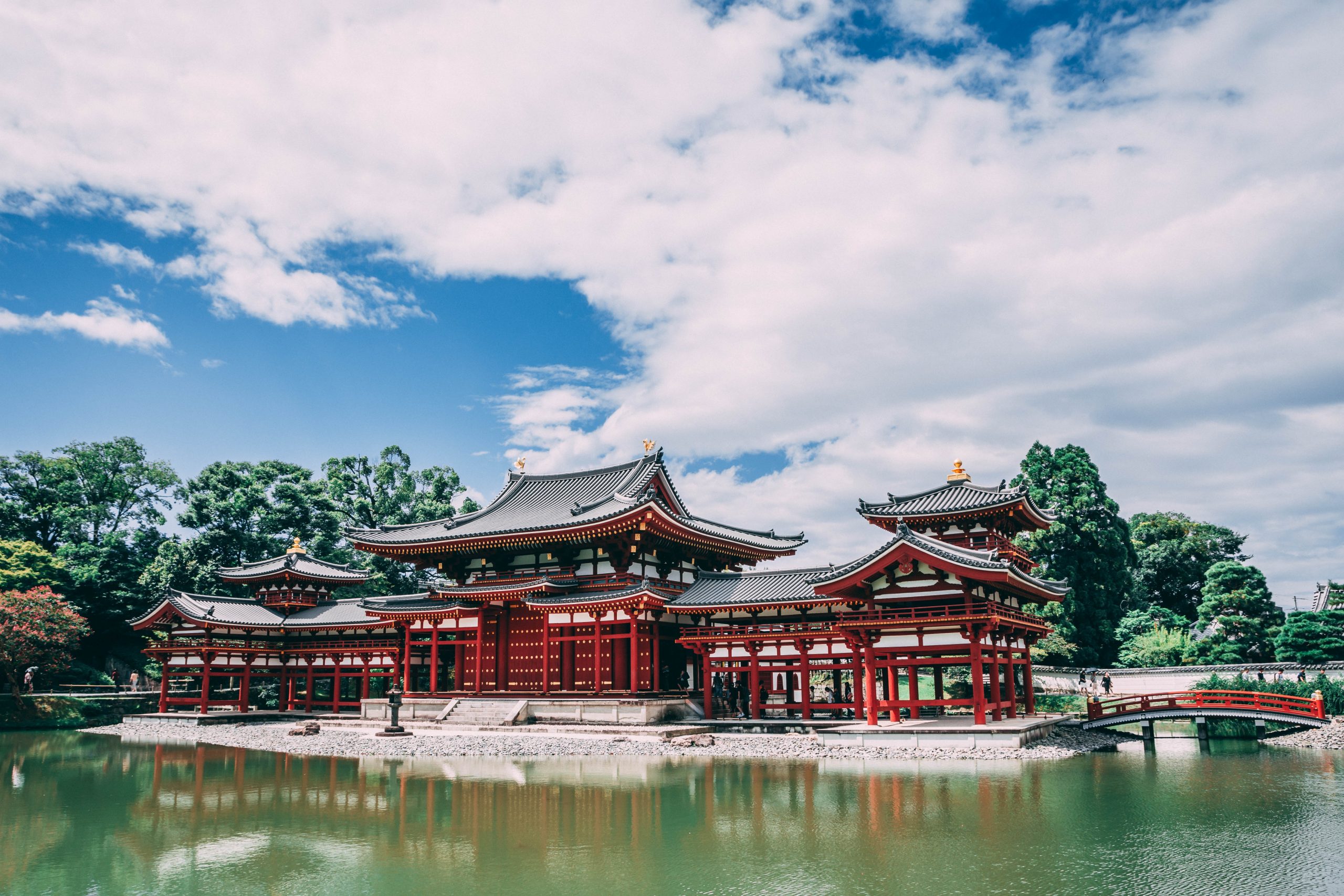
See a Geisha
Geisha, literally meaning “art person” is a female entertainer and hostess trained in traditional arts. You might have seen the movie “Memoirs of a Geisha” but while things might have been different during World war ii, nowadays, a geisha are highly skilled women and much respected in the society. Geisha are trained in traditional instruments and dances and are recognisable by their striking Japanese kimonos and make up, called Oshiroi.
The best places to see geisha in Kyoto is in Gion, on Hanami-koji-dori when they are on their way to a traditional restaurant where they hold their private performances.
If you happen to spot a geisha or maiko, make sure you do so respectfully. Don’t get in their way or get too close to them. If you are very close to a geisha, ask if they will allow you to take a photograph first.
No luck spotting a geisha? Book a private dinner with a geisha or maiko performance in Kyoto.
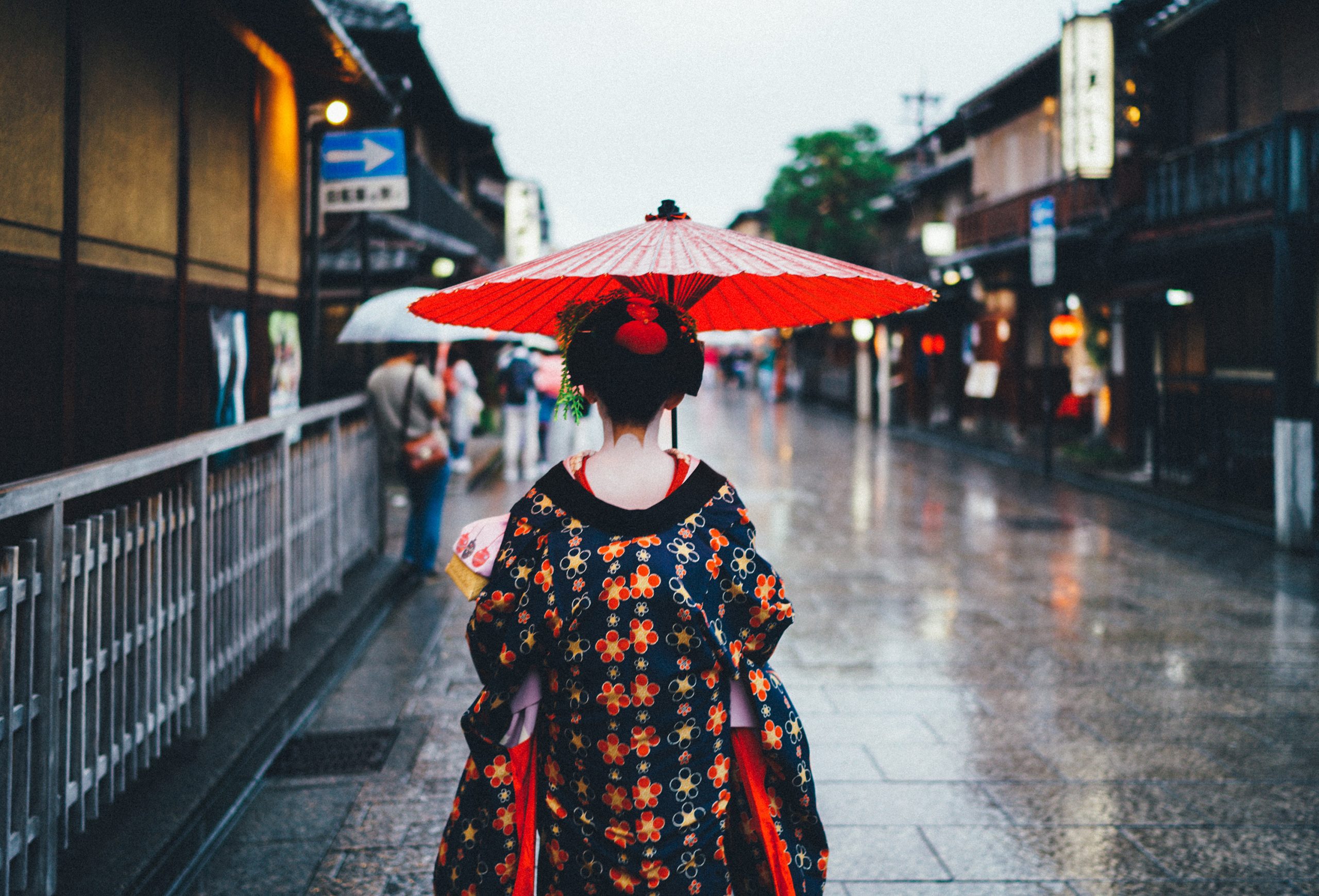
Wear a kimono
The kimono is a traditional Japanese dress made of silk, linen, cotton and wool. Silk kimonos are the most striking, being glossy and colourful.
I know what you’re thinking, can you even wear a kimono in Japan or is it cultural appropriation? We asked this question during our oiran and samurai dress-up session. Locals assured us that most Japanese people love it when foreigners take an interest in the culture.
Basically, it’s perfect fine for foreigners to wear kimonos, as long as the garment is worn with respect and great appreciation towards the Japanese culture. To wear a kimono correctly, make sure that the left side is wrapped over the right one.
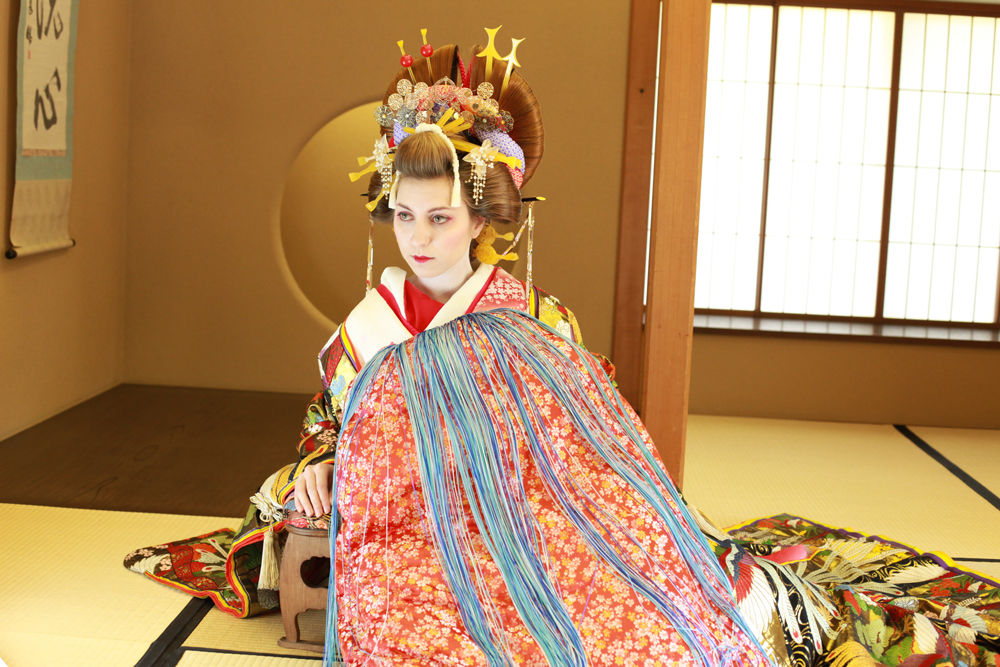
Where to wear a kimono:
Our first kimono session was in Tokyo, surrounded by a traditional Japanese house and landscaped gardens.
Asakusa – Asakusa in Tokyo is the old entertainment district. You can find many kimono rental shops there. As a tips we recommend taking a rickshaw ride for even more traditional photos.
Gion – Gion is the perfect place for renting a kimono as you’ll have the chance to take stunning pictures on well preserved narrow lanes lined with Machiya (traditional wooden townhouses).
Arashiyama – Imagine yourself wearing a silky kimono and posing with the famed bamboo forest in the background. A perfect location to wear a kimono.
Fushimi Inari – A lesser known location for kimono rental is at the base of Mount Inari. Dress up in a kimono and take superb pictures with the vermilion gates in the background.
Good to know: Kimonos are different from yukatas. Yukata is a bathrobe, basically a cotton summer kimono worn in a casual setting like an onsen.
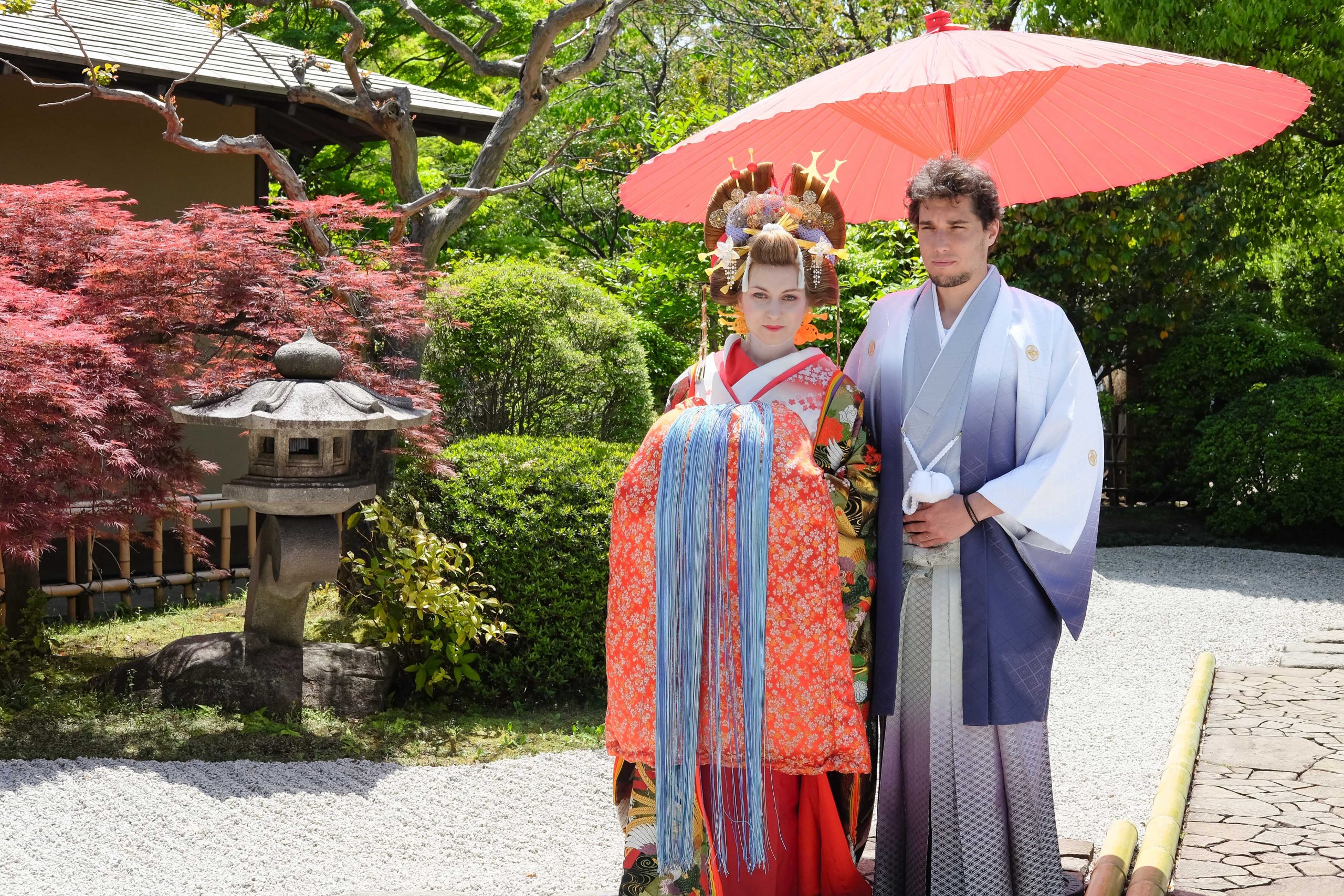
Go on a pub crawl in Tokyo
One of our favourite experiences in Tokyo was to go on a pub crawl with a local. We got to visit several izakayas, and tried some unique drinks like Hoppy.
Izakayas are tiny, and they feel almost like stepping in a friend’s kitchen. But that’s the best part, as these intimate casual bars specialise in drinks and small plates of food.
There are many cool izakayas in Japan but for an authentic experience, we do recommend getting a Japanese-speaking guide. Our guide Kota took us to places we wouldn’t have otherwise known about or been able to try.
For an authentic Izakaya experience, we are recommending going to Shinjuku in Tokyo for Memory Lane or Golden Gai.
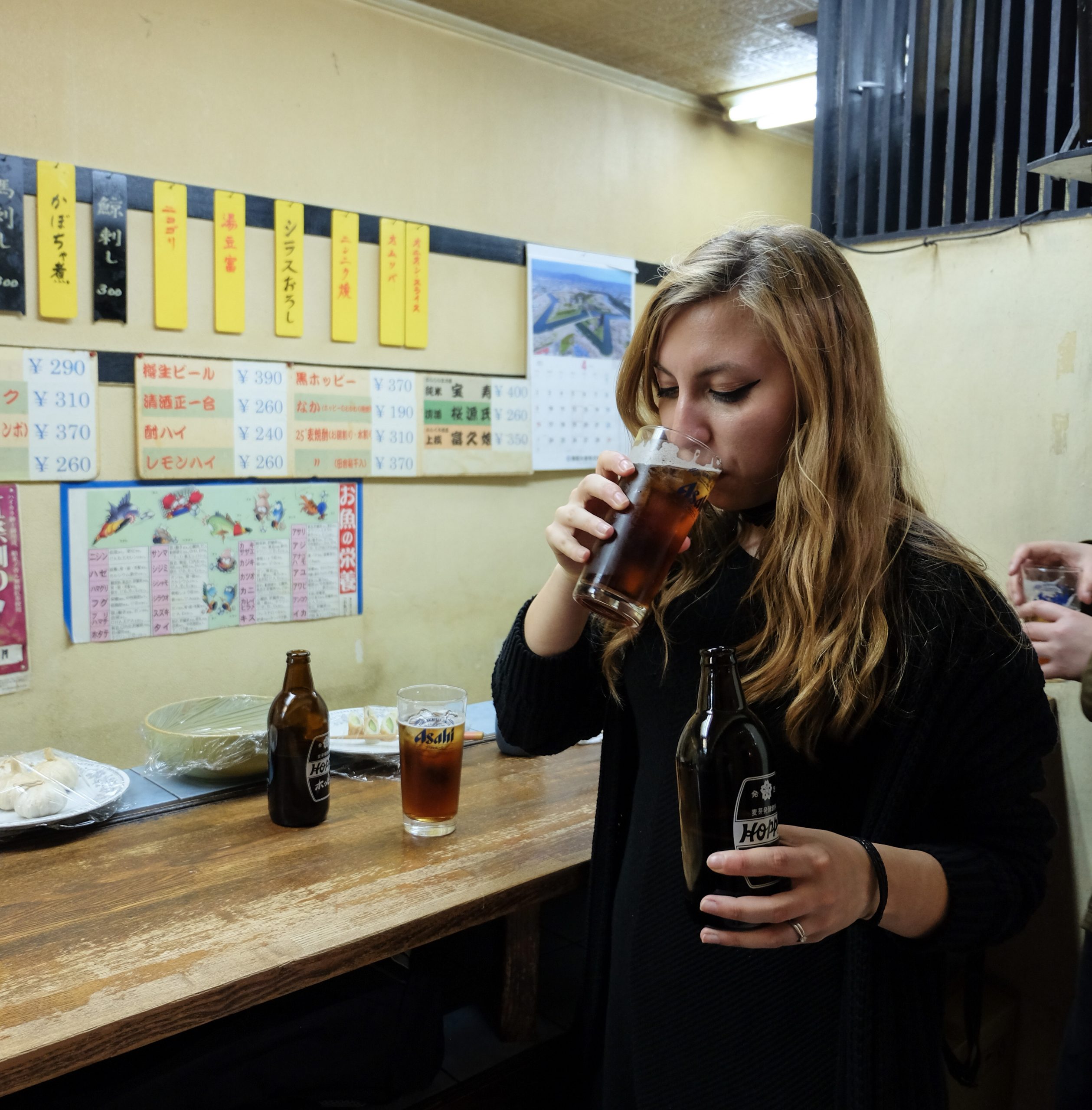
See Tokyo from above
One of the most impressive things to do in Japan is seeing the vastness of the capital city, Tokyo. Tokyo is 2,194 km² which is huge. And when you’re on the ground, you can hardly appreciate just how huge the place is.
Head to one of the skyscrapers with observation decks and see just how incredible Tokyo is from above. We recommend booking tickets for Shibuya Sky to be able to see Shibuya from above. We really love the Observatory Deck in the Roppongi Hills, but if you are on a budget, you can also try the Government Building which offers free entry.
Insider Tip: Go to the Observatory Deck in the Roppongi Hills about an hour before closing time. There will be fewer crowds and you can get more spots to photograph Tokyo from above. It’s best to see the city from above at night, as that’s when it looks most mesmerising. Make sure to bring a tripod with you for night photography.
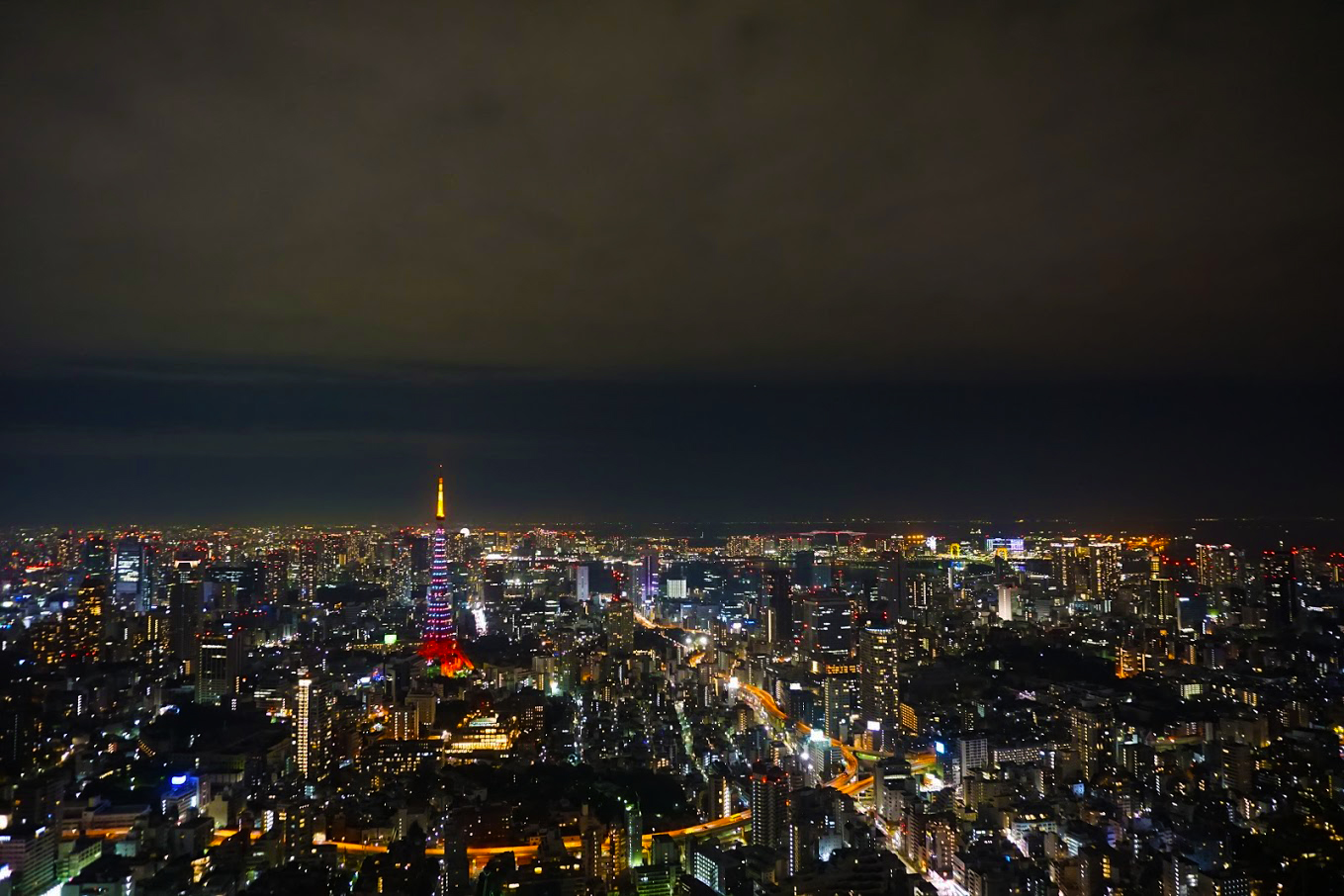
Admire Japanese gardens
There is no surprise that Japan has some of the best landscaped gardens in the world. Even in modern Japan, in central Tokyo you will find splendid natural oasis with manicured trees in Yoyogi Park or Shinjuku Gyeon.
Japanese gardens come in all shapes and sizes. Explore famed gardens like Ginkaku-ji or Kenroku-en, or admire the smaller yet just as beautiful trimmed gardens in a traditional Japanese inn or next to an outdoor hot spring bath.
Some of our recommended gardens for Japan:
The Three Great Gardens of Japan – Koraku-en next to Okayama Castle, Kenroku-en in Kanazawa and Kairaku-en in Mito.
Kokedera – The beautiful moss temple (Saihoji) in Kyoto with its over 120 varieties of moss.
Shinjuku Gyoen – Once an imperial garden, it is now home to 20,000 trees and the perfect place for hanami festivities.
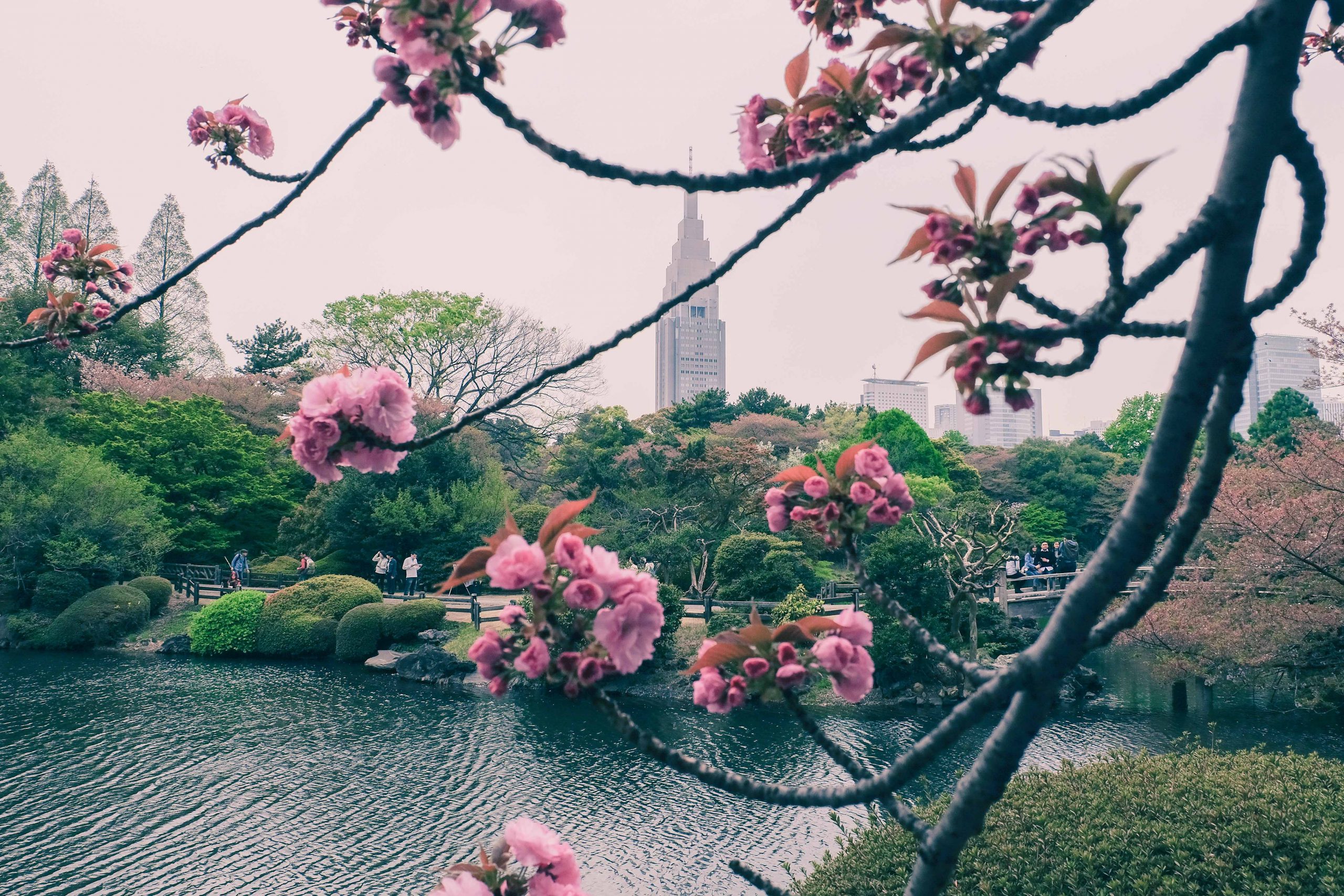
See the million-dollar view in Kobe
Well, in our opinion, all views in Japan are worth a million dollar, but this particular spot in Kobe is a well-known romantic dating location. It is also one of the top three-night view spots in Japan located on top of Mount Rokko. You can see the beautiful cities of Kobe and Osaka from there.
This name “Million Dollar View” was given when the number of lights in Kobe visible from the platform numbered just under 5 million, and the monthly cost to keep them lit was roughly equivalent to one million dollars at the time the rate was calculated. However, after marketing efforts, travellers starting taking note of the viewing location in Kobe, which is now a popular tourist attraction.
Exclusive Tip: See the million-dollar view after dark. We recommend spending the day exploring Kobe, eating the famed Kobe beef, doing some shopping and purchasing souvenirs. Once it gets dark, head over to the three observation spots of the Rokko Garden Terrace and the Rokko Shidare Observatory. The temperature drops when you are at the top of Mount Rokko so make sure to get an extra jacket with you!
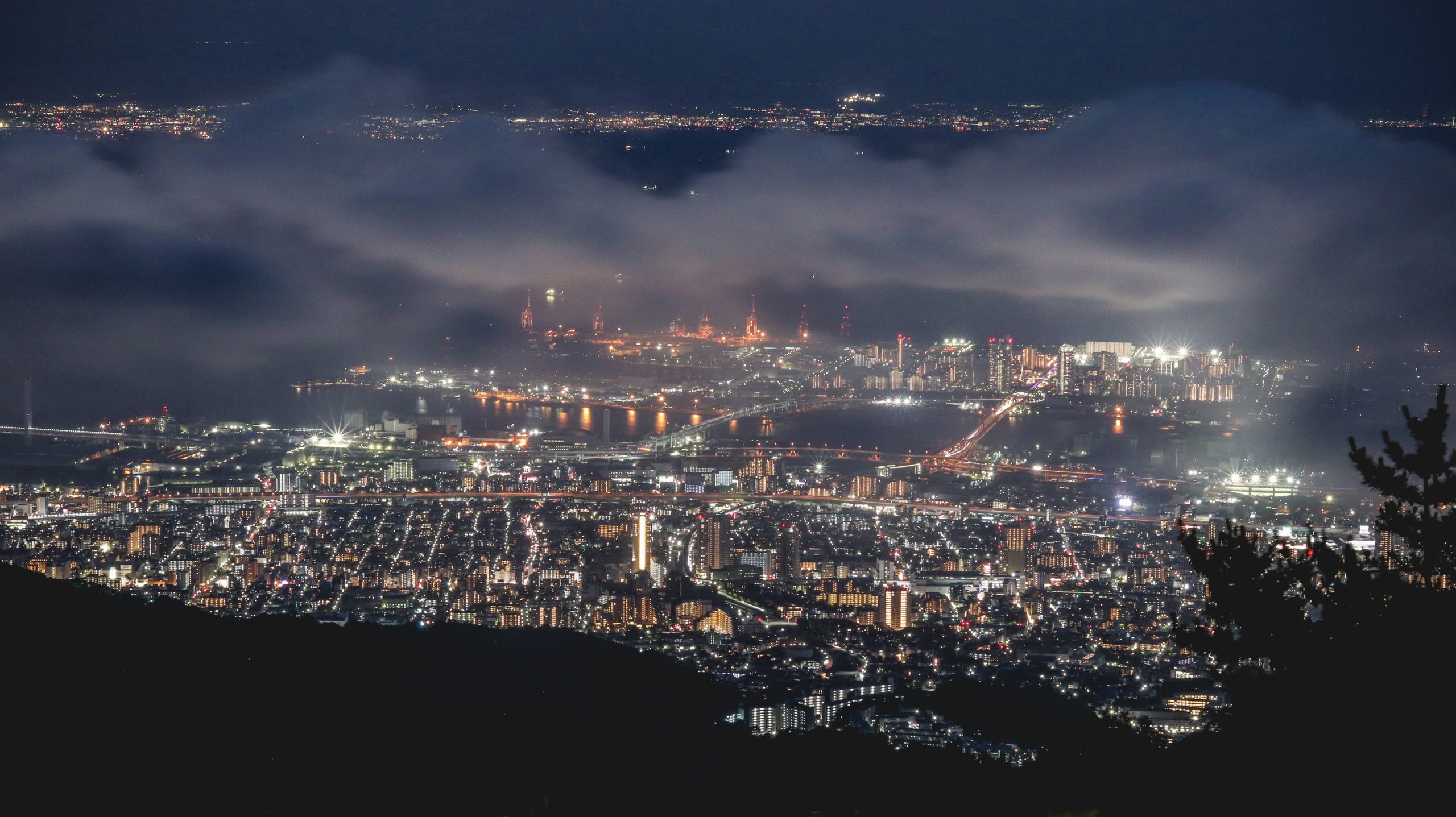
Visit a Japanese Bamboo Forest
Bamboo forests in Japan are one of the most popular attractions since they look so photographic and enthralling. There are several bamboo forests in Japan, but the Arashiyama Bamboo Grove is by far the most popular and most photographed attraction in Kyoto, too.
Seeing a real bamboo forest was a dream come true for us, but we also realised it’s a very popular attraction. This means it gets very busy at times. We recommend visiting the Bamboo forest as early in the morning as possible but note that the path it’s almost always busy.
Insider Tip: For a secluded and charming bamboo forest, we recommend heading to Gio-ji temple in Kyoto. The entry fee is just 300 yen and it’s well worth seeing the temple, as well as the gardens.
Insider Tip: At the beginning of December, the Arashiyama bamboo path gets illuminated between 5pm. -8:30om. The stalks look bright as the illuminations are from the ground up. It’s a bucket list experience if you visit Kyoto during winter.
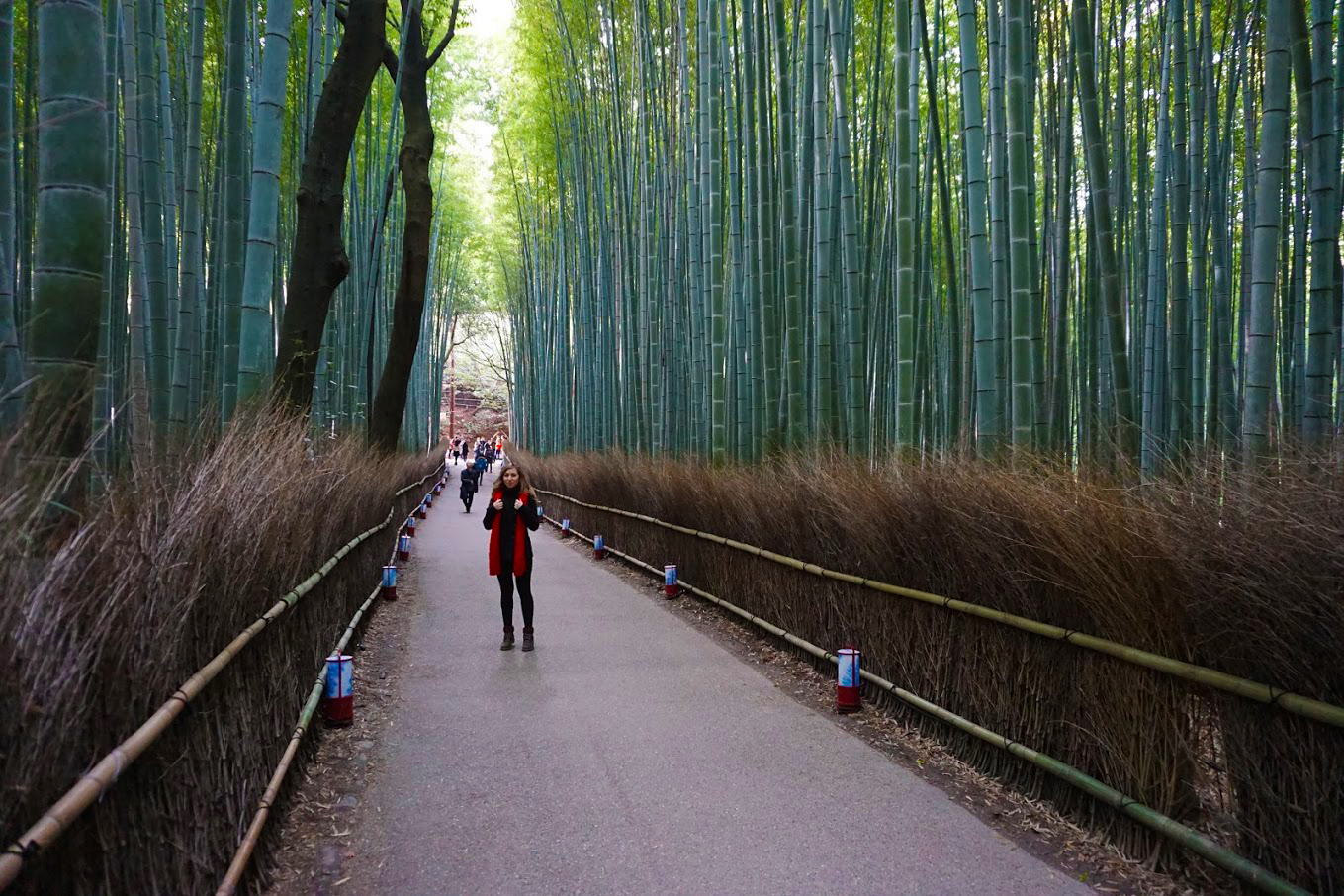
See a game of Sumo
Purchase tickets to see a game of Sumo in advance, as tickets sell very fast. If you travel to Japan outside the Sumo tournament, you can still see Sumo wrestlers practice in the morning, in Asakusa District in Tokyo.
There are several Sumo stables around Asakusa willing to accept foreigners with a Japanese-speaking guide to just sit quietly and observe the morning practice.
Since Sumo is a traditional national sport, seeing Sumo players in action truly is a unique thing to do in Japan. Japan is the only country where sumo is practised professionally, and it is a type of Japanese martial art.
You will find that many ancient traditions have been preserved in sumo and even today, the sport includes many ritual elements present in Shinto. For example, when visiting a sumo stables, you should not point your feet towards the players.
To see Sumo wrestlers during their practice in the morning, you can click here to book your tour.
Insider Tip: Talk a local guide to arrange this cool activity for you. Sumo stables don’t accept foreigners without prior appointments and to get one you must speak Japanese. When arriving at the stable, be cautious to follow all instructions carefully. Be polite, sit down quietly and observe the practice.
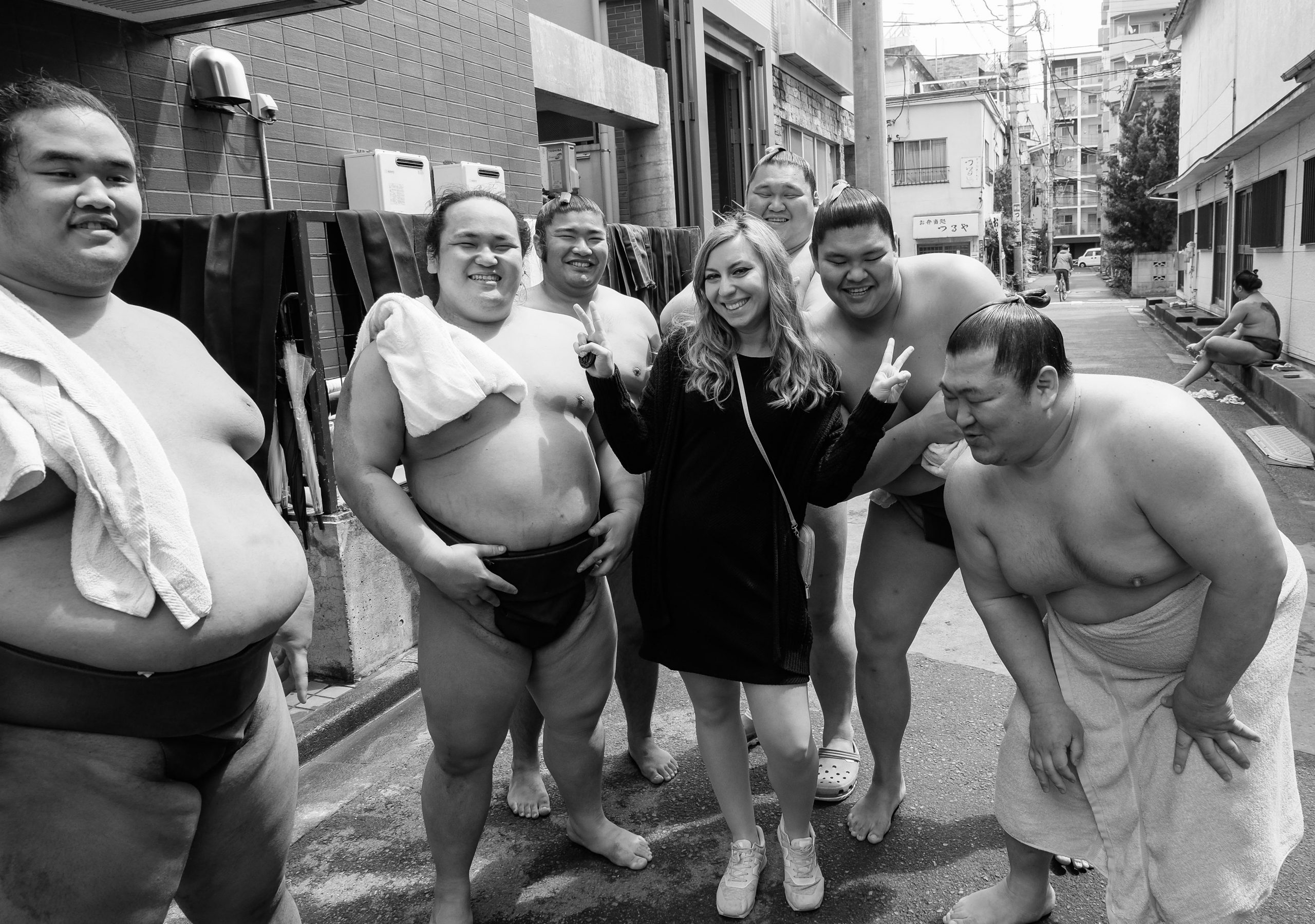
Stay in a Ryokan
If you love Japanese history, then you will definitely want to book a stay in a ryokan, to experience the ultimate hospitality in Japan.
A ryokan is a traditional Japanese inn where guests wear traditional yukatas, eat kaiseki dinner and soak in onsen. Ryokans are usually made of wood and have tatami floors, with futons for guests to sleep on. Ryokan existed since the 8th century AD during the Keiun period.
Staying in a ryokan is a must for any tourist in Japan. Most ryokans include breakfast and dinner in the price of the stay, and some come with beautiful onsen facilities where you can enjoy a perfect wellness weekend.
If your budget can stretch, some ryokans offer rooms with private onsens for the ultimate Japan bucket list experience. We experienced a ryokan in the Japanese Alps and honestly, it was the best thing ever, with fantastic food, amazing views and a relaxing onsen in nature.
Ryokans tend to be expensive; thus we recommend booking yours in advance. Click to book your ryokan now.
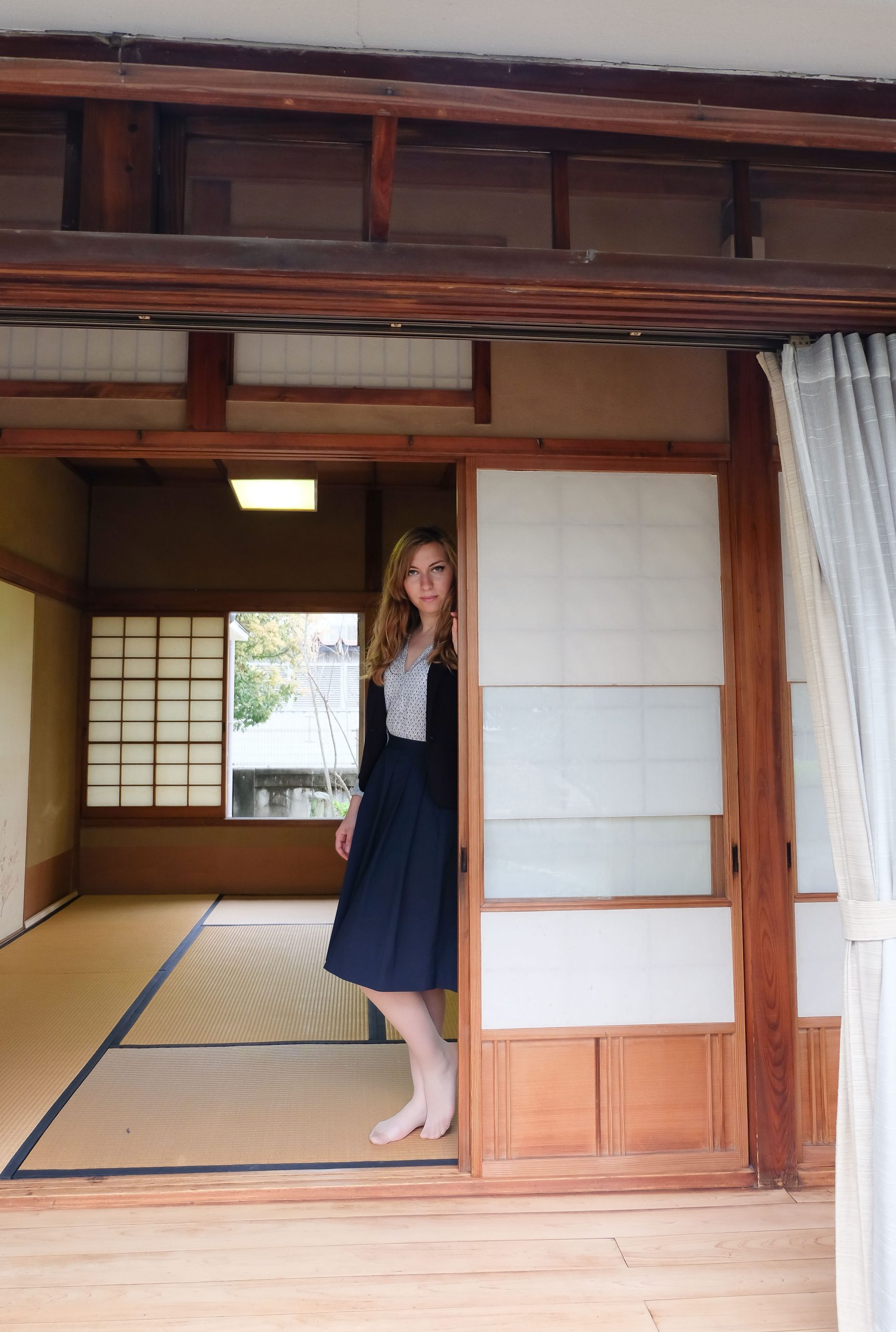
Have the Kaiseki experience
Our favourite foodie experience in Japan was enjoying a Kaiseki meal because it’s very similar to a Michelin tasting menu, just most affordable, and made with traditional and seasonal ingredients.
Kaiseki is a traditional multi-course dinner which originated in Kyoto. The word Kaiseki refers to the collection of skills to allow of preparation of such meals. It’s similar to the idea of a multi-course dinner in a Michelin Restaurant.
Kaiseki is the perfect balance of taste, texture, appearances, and colours, and chefs go to great lengths to ensure every course is perfect in every way. Kaiseki menus change every week to ensure every season and ingredient is greatly cherished.
Kaiseki has a Sakizuke or an appetizer, a second course which usually sets the seasonal theme and a sliced dish of seasonal sashimi. Then you will get vegetables served with meat, fish or tofu, a type of soup and flamed grilled food. The chef will provide you with a small dish to cleanse the palate, followed by a substantial dish with rice and seasonal pickled vegetables. You will finish off with miso served with rice and, of course, a seasonal dessert.
Good to know: Kaiseki dinners can be costly in Japan. If you want to budget your travel, we recommend that you book a ryokan which offers a kaiseki dinner included in the accommodation price. By combining several activities in one, you will experience more activities and get to save money.
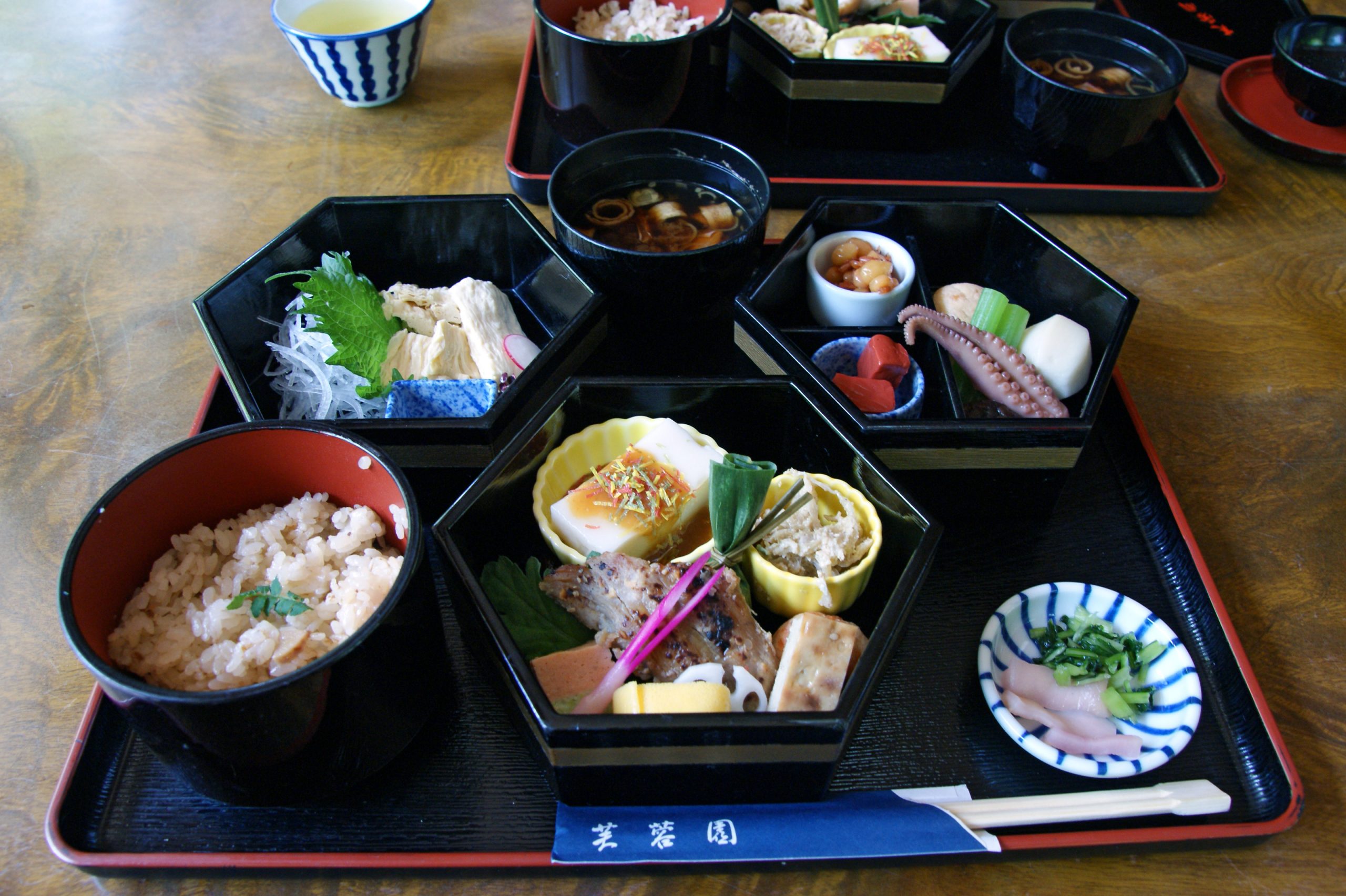
See the Snow Monkeys in Nagano
One of our favourite things to do in Japan was seeing snow monkeys in the mountains of Nagano.
Visiting the Snow Monkey Park in Japan was an incredible experience for us, as we got to see snow monkeys bathing in a hot onsen. It’s not just that, but the way the park itself looks so incredible, with ancient pine trees and fantastic vista points.
We highly recommend allocating a whole day for this experience, as it takes a good 3 hours to get from Tokyo to the Snow Monkey Park.
To get to the Snow Monkey Park, you have to take a train from Tokyo to Nagano, then change for another local train towards Yudanaka. From there, take a local bus, which will drop you off in front of the trail to the park. The trail itself which is just over 1 km, will take you through an ancient forest which looks magical and enchanted. The entry fee is JPY3600 per adult.
Insider Tip: Visit on a cold day, so the snow monkeys have a reason to bathe in the hot onsen. We visited on a freezing day in early winter. If you manage to visit on a snowy day, you will capture the most breathtaking photographs in Japan.
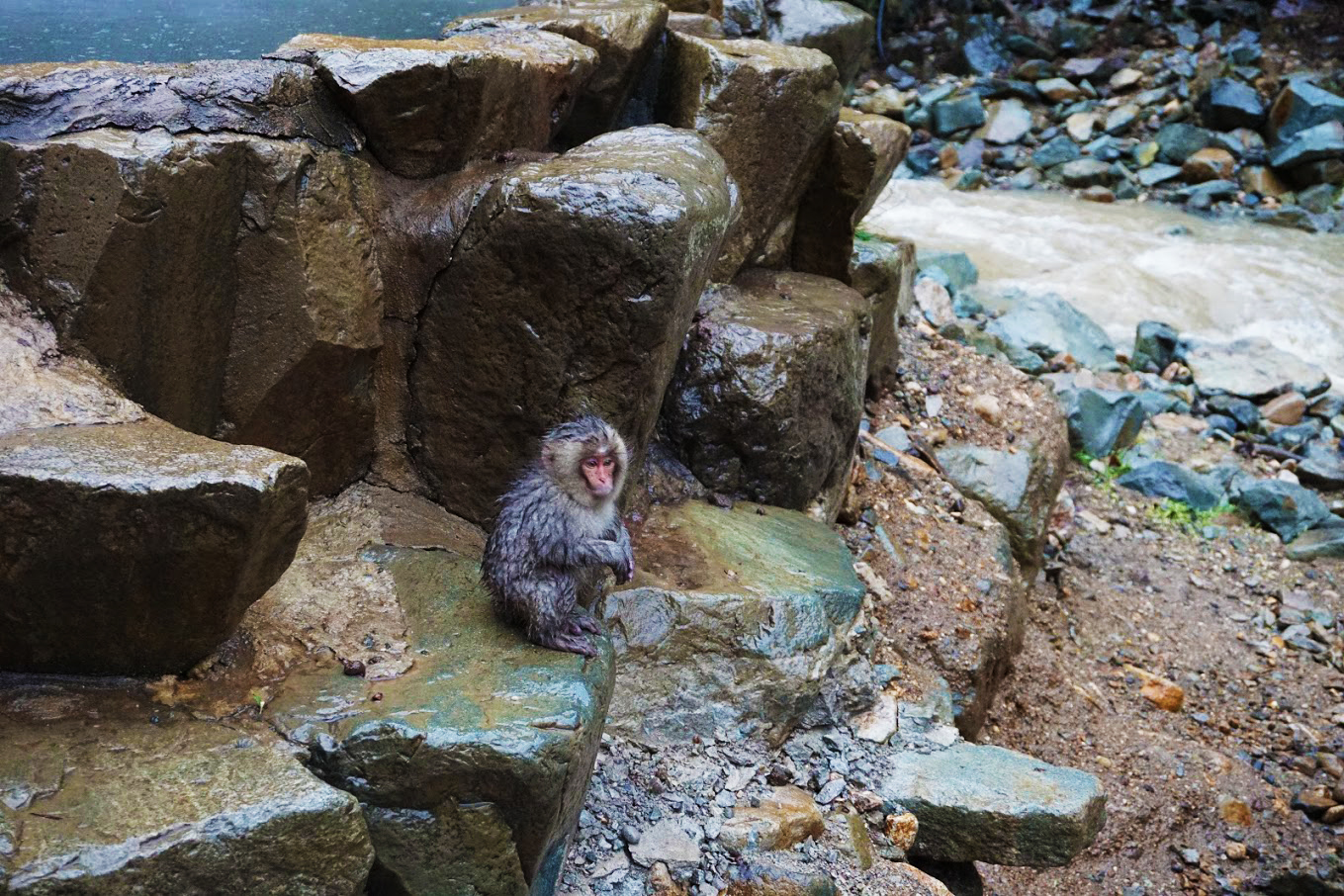
Visit the kawaii land in Harajuku
Unleash your inner child and shop for kawaii merchandise in Harajuku. Harajuku is our favourite place for colourful sweets, crazy pancakes and delicious candy floss.
Harajuku is known to be the mecca for kawaii items, but beyond clothes and accessories, this place is fantastic for adorable and colourful food which tastes delicious. Go to Totti Candy Factory and order the brightest rainbow-coloured cotton floss.
Insider Tip: If you are travelling with kids or teenagers, add kawaii land to your must-do list in Japan. This fun and cool place will enable you to see an array of cute products and sit down in some of the most unconventional restaurants in the world. This is where the youth of Tokyo comes to express themselves, so visiting this part of the city allows you to see unconventional Japan.
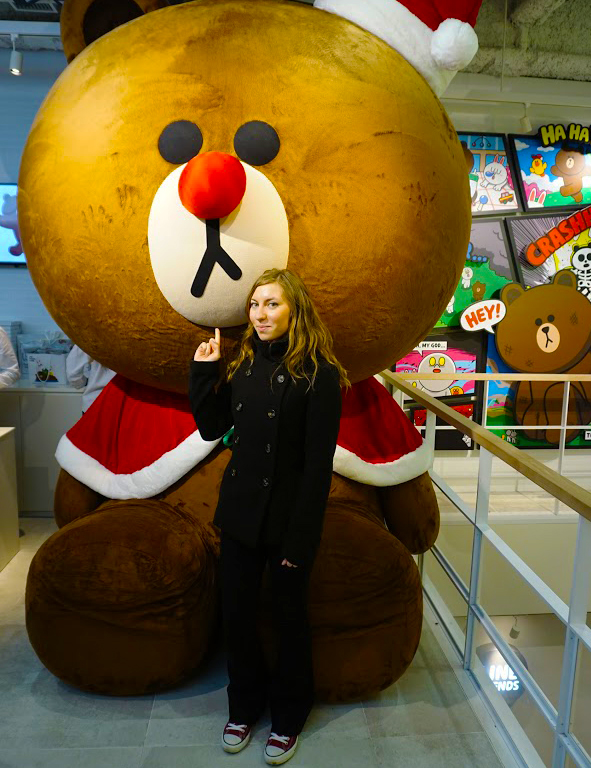
Sleep in a capsule hotel
Staying in a capsule hotel might sound strange at first, but it’s actually a really fun experience. Capsule hotels are much roomier than you’d think and come with all the right amenities to be able to charge your food and have privacy.
Tokyo has a huge space problem and to address this issue, creative businesses came up with the idea of a capsule (pod) hotel. Their main target audience were businessmen who needed a quick and easy place to sleep, but capsule hotels are now a really popular thing to do in Japan.
They are so popular that other countries like Singapore, Russia, and Thailand started to adopt this idea. People love them because they are cheaper than traditional hotels, but more comfortable and private than a hostel.
Good to know: Some capsule hotels offer public baths with hot springs and very clean bathrooms. It may not be for everyone, but it is definitely a unique experience during your trip to Japan. Because they are popular with tourists who want to try one, they do book up pretty fast, so make sure to Book your capsule hotel now.
Insider Tip: Travelling with your partner? You can rent a couple’s capsule hotel as we did. While you still share the bathroom with others, your capsule is for two people (called a double pod). These capsule hotels are still cheaper than ordinary hotels and more comfortable as you get to sleep with your loved one.
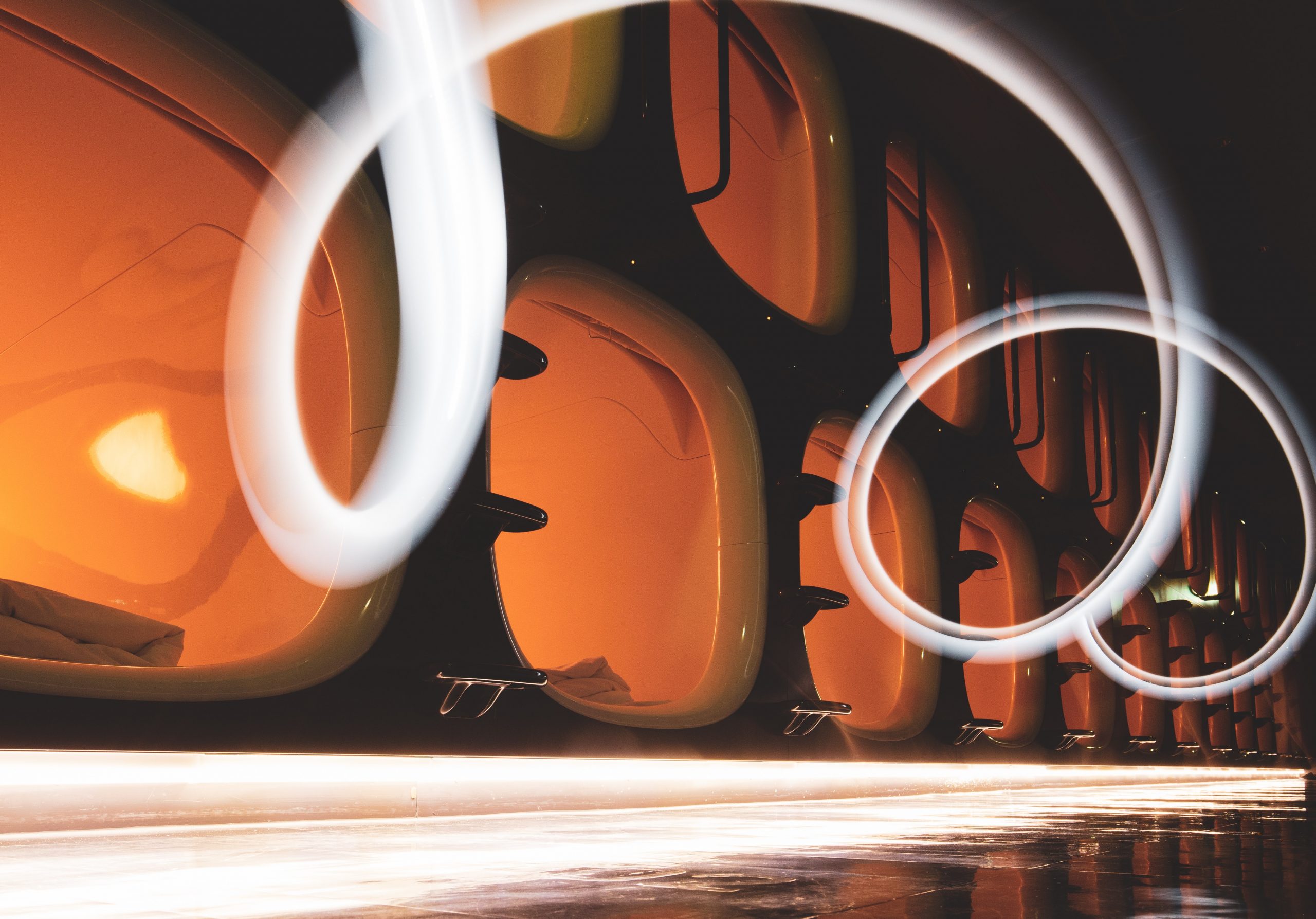
Visit Nikko’s waterfalls
Nikko was one of our favourite day trips from Tokyo. There is so much to do and see Nikko and if you want to explore some of Japan’s best hikes this is the place for you.
Take the Yasukawa Town Bus from the Nishisandoiriguchi Bus Stop towards the Chuzenji Onsen. Walk for about 3 minutes to get to the famous and impressive Kegon Falls.
For impressive views, take the Akechidaira Ropeway to the Observation Deck to photograph the most impressive views of Kegon Waterfalls and Lake Chuzenjiko.
One of the best times to visit Japan is during autumn, and that’s when the Nikko trails and Kegon Falls look the most amazing.
Insider Tip: To make the most out of your experience, get a local guide so they can show you off the beaten path hiking trail and lesser-known waterfalls also. It’s well worth the investment, as you get to see secret waterfalls no foreign tourists know about.
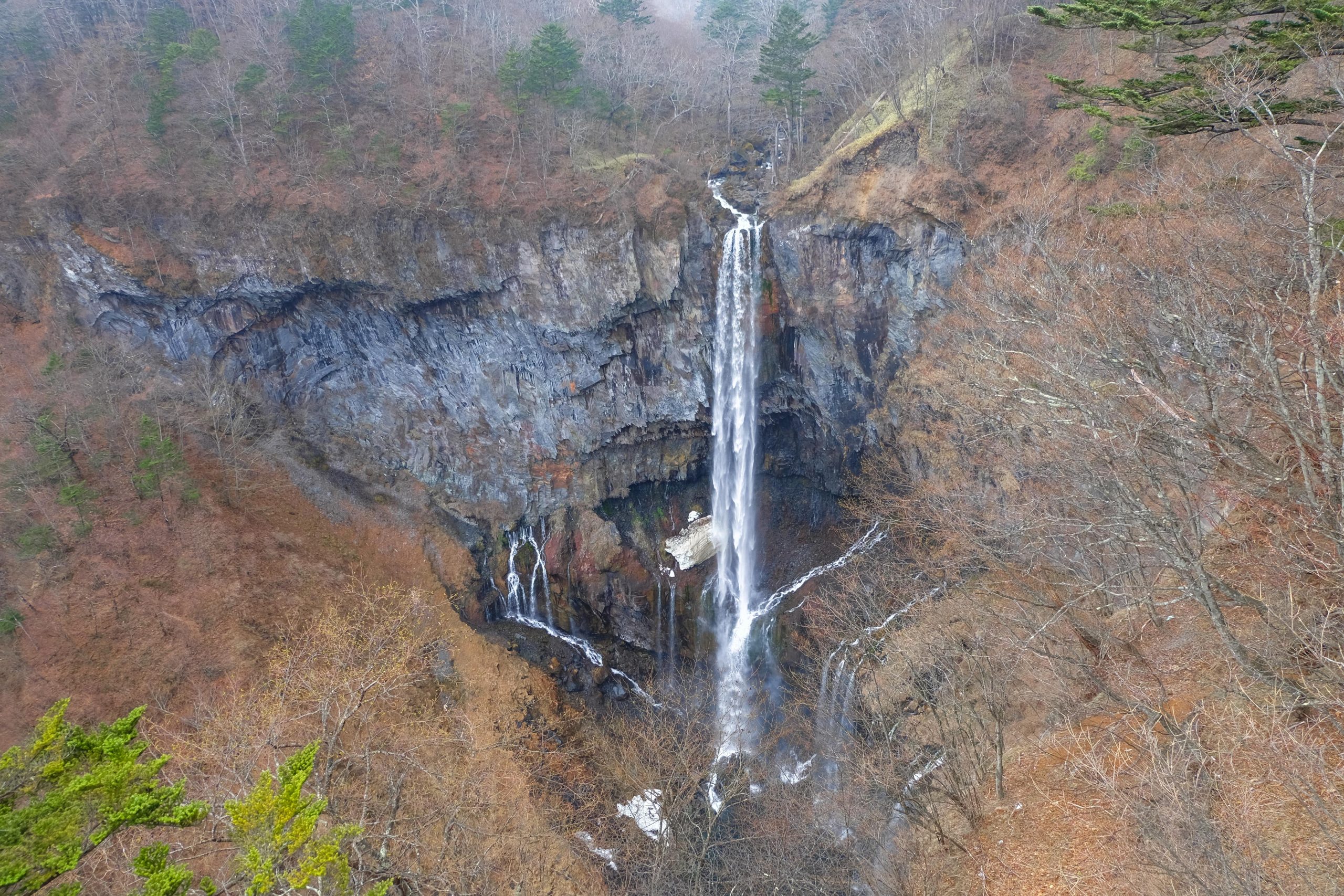
Go shopping for souvenirs
Japan is so quirky, you will want to purchase a lot of items and bring them back as souvenirs. And let us tell you, shopping for souvenirs is a so much fun, because you can spend hours and even a whole day exploring Japan’s department stores.
Find unique Japanese souvenirs like ramen bowls from Asakusa, fancy chopsticks from Ginza or cute accessories from Harajuku. The point is, everywhere you want to shop, you will find something fantastic to buy.
Here are some of our favourite places to buy souvenirs.
Asakusa in Tokyo – Asakusa is a great place to visit for souvenirs as well as traditional things to do in Japan. You can rent a kimono, go on a rickshaw tour or hire a tour guide to show you around the old entertainment quarters. Go to Asakusa for the souvenirs and come back with memories and experiences
Ginza in Tokyo – Go to the famed 1930s Wako Honkan department store for luxury souvenirs and fancy gifts.
Siho-dori in Kyoto – Ideal for food related souvenirs like teas, jams and preserves. It’s an ideal place to find ume (plum) wine.
Shibuya in Tokyo – Head to Loft in Shibuya, a 7 story building which lots of Japanese items ranging from cosmetics, to stationary
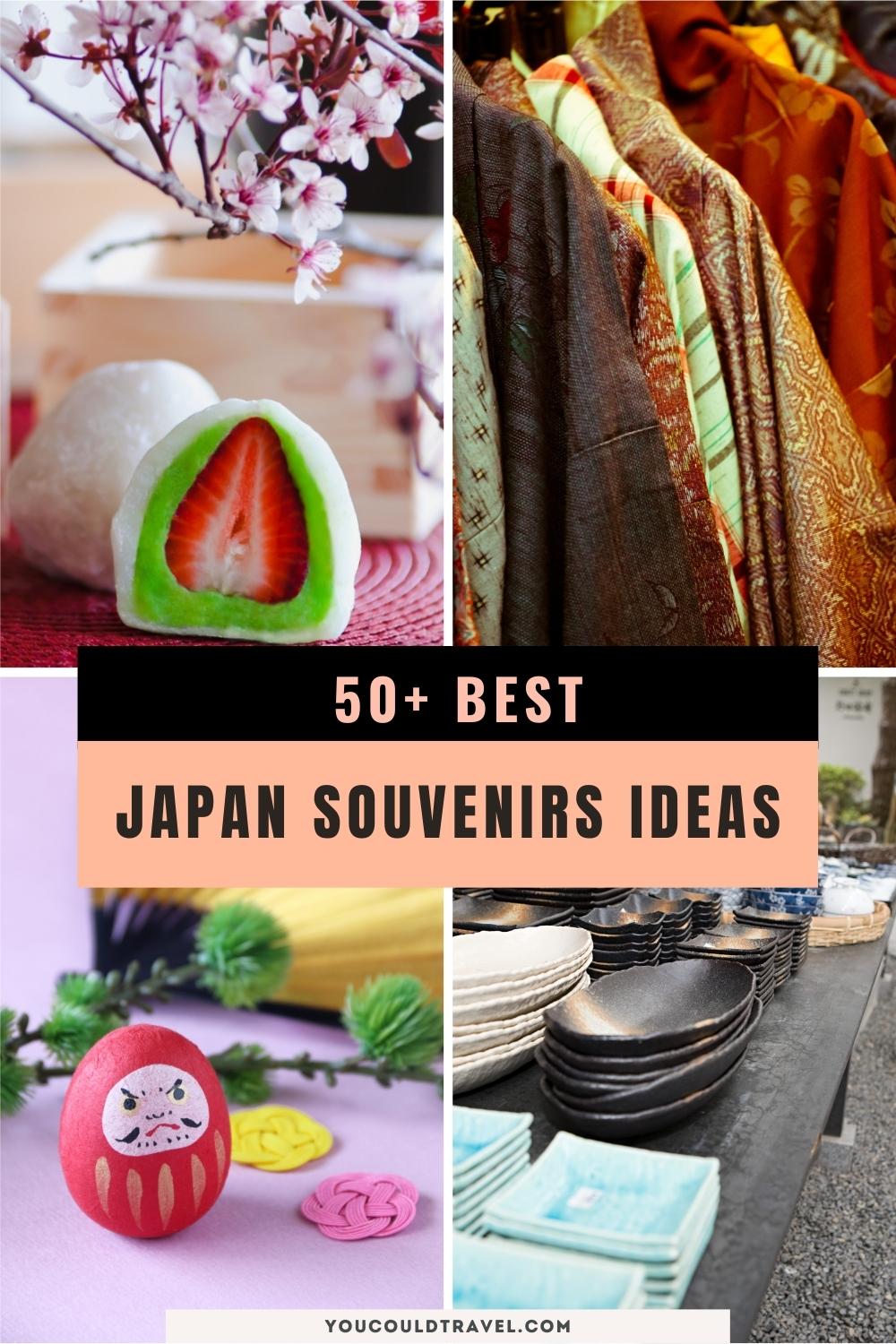
Go skiing in Japan
Winter in Japan is one of the most incredible seasons to experience the country because it’s beautiful and it’s a more affordable time to visit. If you love winter sports, visit Japan during the winter months, and go to Hokkaido to ski in Japan.
Japan has a lot of snow in the mountains, and many locals go skiing and snowboard in the winter. Not many tourists know that Japan is a fantastic destination for winter sports. If you’ve never skied before, don’t worry, as there are skiing schools with trained professionals, so you can learn a new skill.
Local Tip: Most people tend to go to Niseko in Hokkaido or Hakuba, near Nagano. We recommend staying in a traditional ryokan so, after a full day of skiing, you can go chill in an onsen, change into a traditional yukata and eat a kaiseki dinner. This is a must-do in Japan for winter lovers.
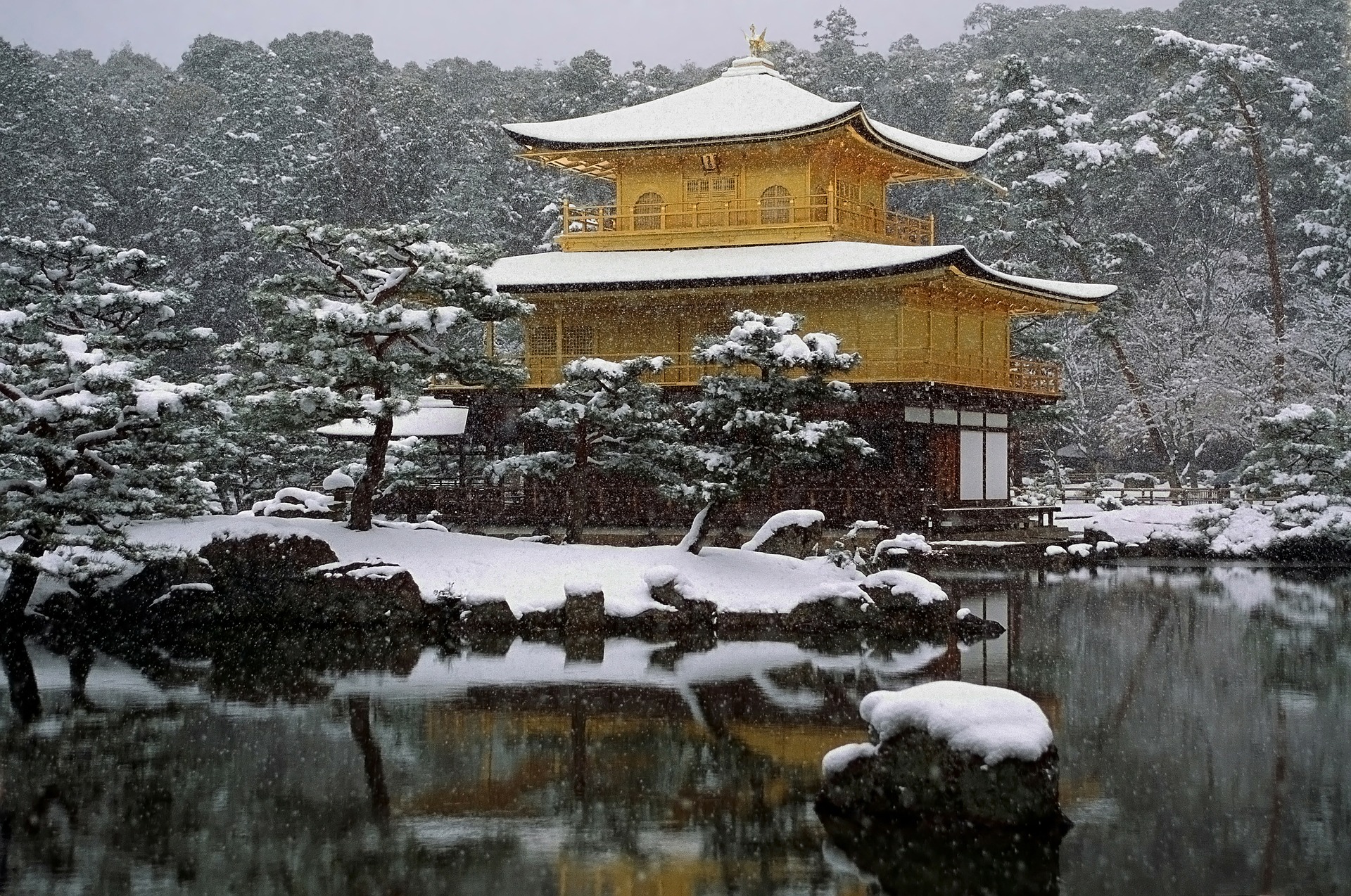
Visit Toyama for firefly squid
In Toyama Bay, every year between March and June, tens of thousands of bioluminescent firefly squid appear from the deep ocean putting up a marvellous blue light show, one of the rare and beautiful spectacles of this planet.
They normally live in the deep sea, but come near the surface for spwning season. Firefly squid is commercially fishes and can also be eaten as a seasonal dish.
To get to Toyama from Tokyo, take the shinkansen from Tokyo Station to Toyama Station (in the city centre) and make your way to the bay on the Toyama Light-Rail towards Iwasehama Station. The trip to Toyama is around 3 and a half hours and costs 13000yen ($115) or free with your JR Pass.
It is important to go at night (early morning) so it’s dark enough for you to see the firefly squid in all its glory. The excursions normally leave at around 3 am in the morning. Be sure to reserve your seat early.
Explore Kabukicho, Asia’s largest red district
For an unusual activity in Japan we highly recommend visiting Kabukicho, Asia’s largest red district located in Shinjuku, Tokyo. Most tourists head there to see the large Godzilla over a Shinjuku skyscraper, but there’s a lot more to the area than meets the eye.
You will find eateries and restaurants, interesting souvenirs shops, but also adult-only entertainment. This particular activity is tailored for couples who travel without children and want to experience a different side of nightlife in Japan.
Important to know: Kabukicho is a fun and exciting experience, but always be cautious and avoid going pub crawling in this area without a trustworthy guide.
You will find hostess bars, adult parlours and an array of adult toy shops here. Kabukicho is full of bright neon advertisements, so it’s a great place for night photography. You don’t have to enter any establishment to enjoy a walk around Kabukicho. Seeing the locals and the colourful lights at night is a great experience on its own.
Insider Tip: If you want to enter any establishment, we recommend getting a local guide who speaks perfect Japanese. Many of the bars and restaurants are tailored for locals only and to avoid any trouble, it’s best to have a Japanese speaker with you.
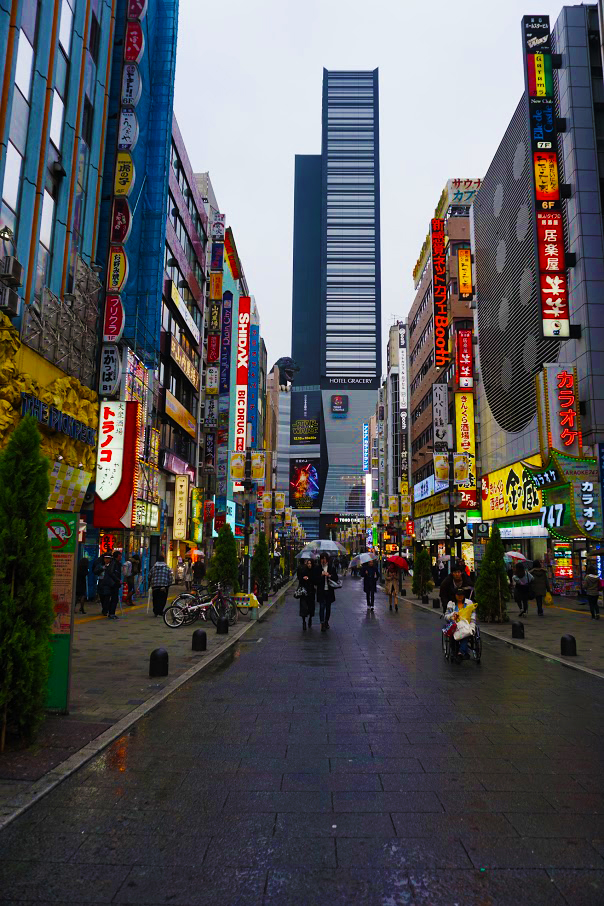
Visit Akihabara, the Electric Town
If you are like us and appreciate anime, you must go to Akihabara, also known as Electric Town. This is an excellent place for anime and mango enthusiasts.
Akihabara was once the place where people went to buy electronic items, but it eventually evolved into a geeky hub, filled with anime and manga references.
Akihabara is also known for its large shops, some of which sell magazines, electronic and even cosmetics. You can also come to Akihabara to find anime figurines and posters with Sailor Moon. There are several electronic souvenirs for good prices here like instant Fuji cameras, phones, and computer parts.
Here are some of our recommended things to do in Akihabara:
- Visit a maid cafe – A maid cafe cater to the fans of anime, manga and video games. There is an entry fee (500-700 yen per person) plus whatever you wish to order.
- Go to Yodobashi Camera – Visit the best electronics stores in Japan to buy the latest electronic gadgets. You can easily spend 2-3 hours here.
- Go-Kart – Dress up in your favourite Super Mario character and drive around the streets of Akibara as a real life mario kart.
Insider Tip: Visit Akihabara in the evening, as that’s when the district really comes to life. As a great shop for all tourists and budgets, we recommend visiting Don Quijote, a super cool store which sells everything you can imagine from skincare, through cosplay clothes to budget household items.
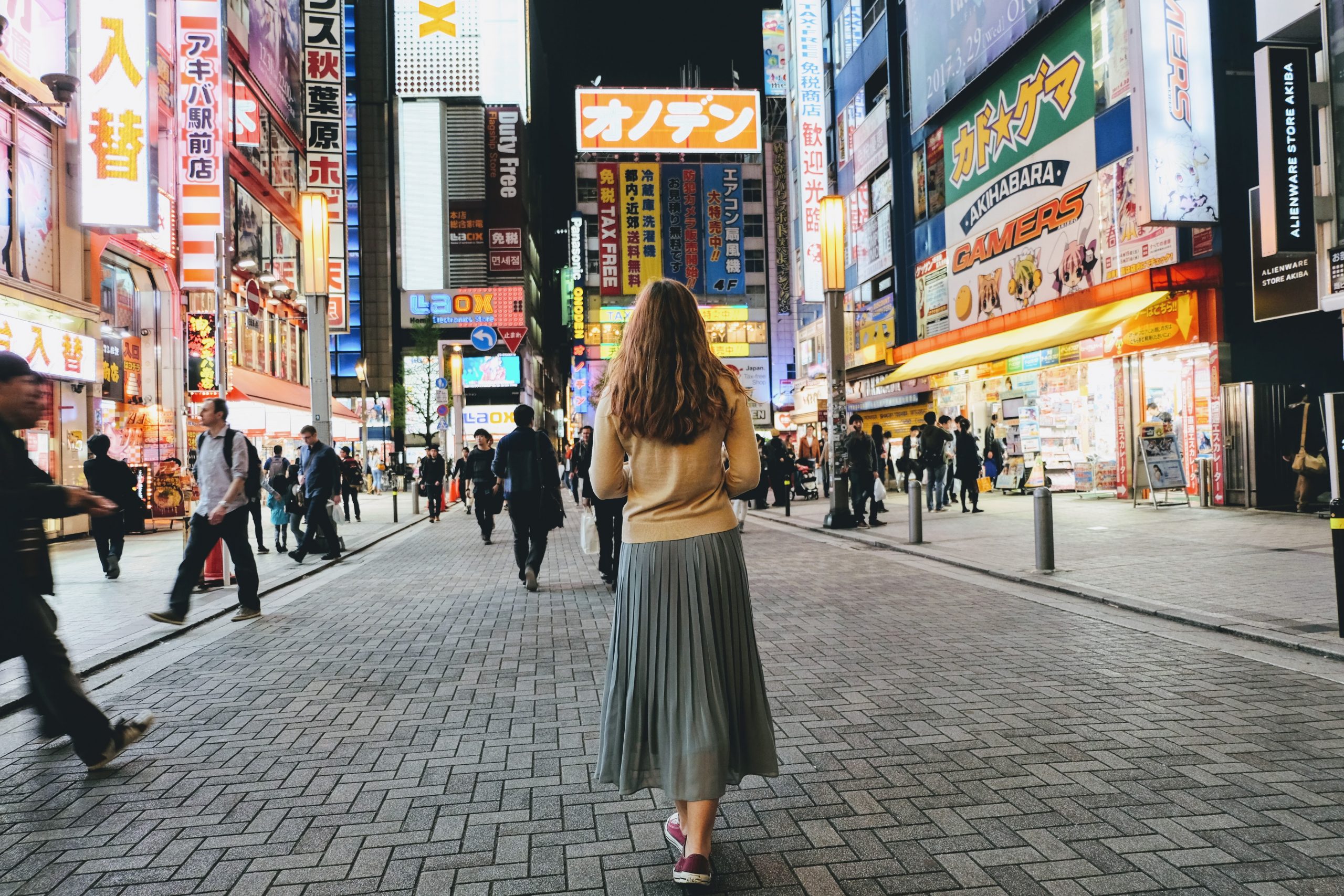
Participate in a matsuri (Japanese festival)
While festival season gets quite busy in Japan, we highly recommend participating in a matsuri to understand more about the local culture. During the festivals in Japan, people come together to celebrate, eat lots of street food, sing and dance.
Some of the most famous festivals in Japan are the Yuki matsuri (Sapporo snow festival), Omizutori in March, Gion matsuri in Juky and Obon matsuri in August.
The most important national holidau in Japan is shogatsu, which is the New Year. Another significant time in Japan is the Golden Week in May.
Good to know: There are hundreds of thousands of Japanese festivals throughout the year, and they are held to show thanks for nature, life, and community.
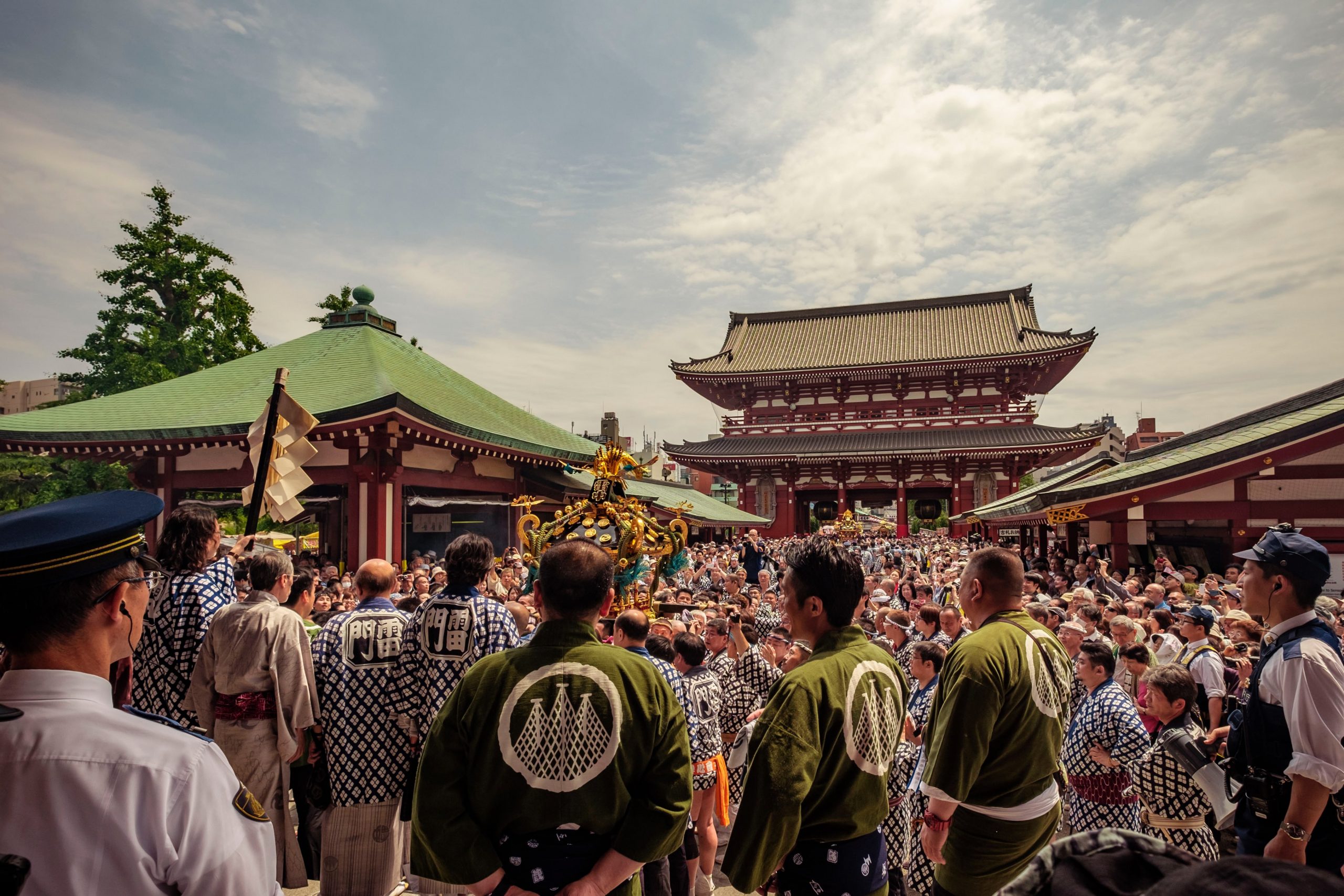
Take the Shinkansen
Travelling with the shinkansen is one of the coolest things to do in Japan because this bullet train is so fast, it goes 500 kilometres per hour (200 to 275 miles per hour).
These high-speed trains take you from Tokyo to Kyoto in 2 hours whereas driving would take around 6 hours. You can cross the whole of Japan by using Shinkansen trains. They are silent, spotless and very fast. Not just that, they are also reliable and on time.
Is there a catch? Yes, Japanese bullet trains are expensive! Luckily though, you can get unlimited travels around Japan with a JR Pass, a handy pass specifically created for foreigners to enjoy more places in Japan.
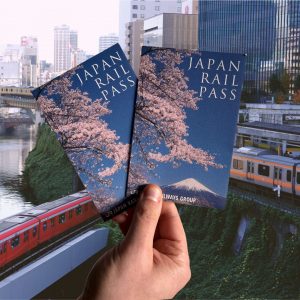
Japan Rail Pass
The optimal way to explore Japan is with a rail pass that is available for durations of 7, 14, or 21 days, offering unlimited travel across the country. Shinkansen included!
We travelled extensively around Japan and bought a JR Pass to be able to travel hassle-free around the country. We first travelled from Tokyo to Nagano, then Tokyo to Kyoto, Kyoto to Osaka, Himeji Castle, Nara and beyond. These trips would have cost us thousands of pounds, but we only paid for the JR Pass before our arrival in the country.
Good to know: Book your tickets in advance and make sure to reserve seats at no extra cost. You can reserve tickets at any major train station around the country. Respect the queues at the stations and only seat in your allocated seat. You are allowed to eat and drink on the Shinkansen journey. We recommend purchasing some snacks for your trip.
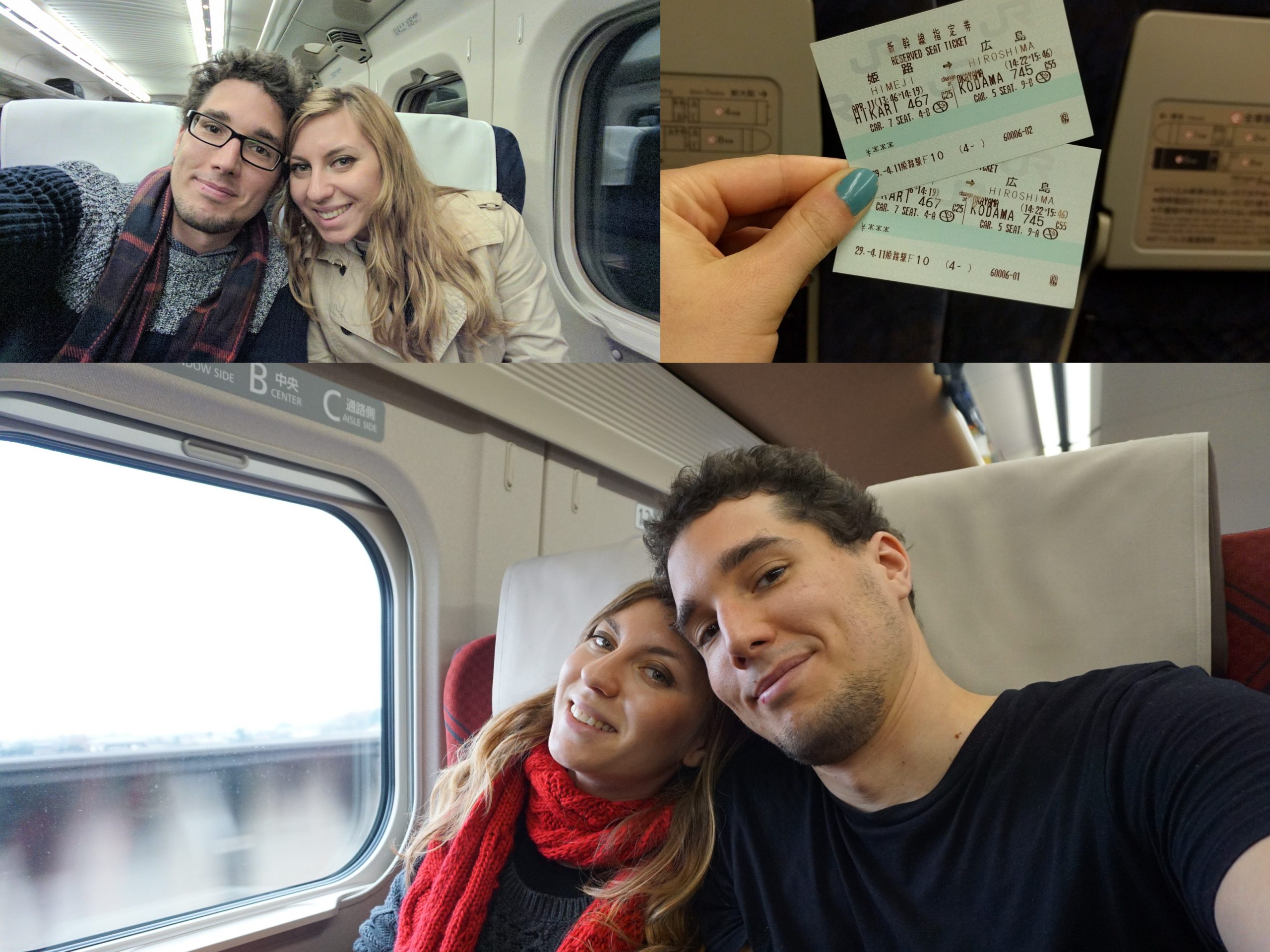
Eat in a cheap Michelin star restaurant
Who doesn’t want to enjoy a Michelin star restaurant during their trip to Japan? We’re here to tell you that this experience doesn’t have to break the bank. On our quest to try as much Japanese food as possible, we came across affordable Michelin star restaurants.
At Nakiryu or Konjiki Hototogisu, the ramen start from ¥900. There is currently no reservation system for these restaurants so you will have to join the queue outside and wait for your turn. It’s completely worth it, though, as you’ll enjoy the best ramen in Tokyo.
Good to know: Familiarise yourself with Japanese restaurant manners before going to a high-class Michelin restaurant. Part of the exquisite experience is going with the theatre of the culinary arts, the process of receiving the food, admiring it and eating it.
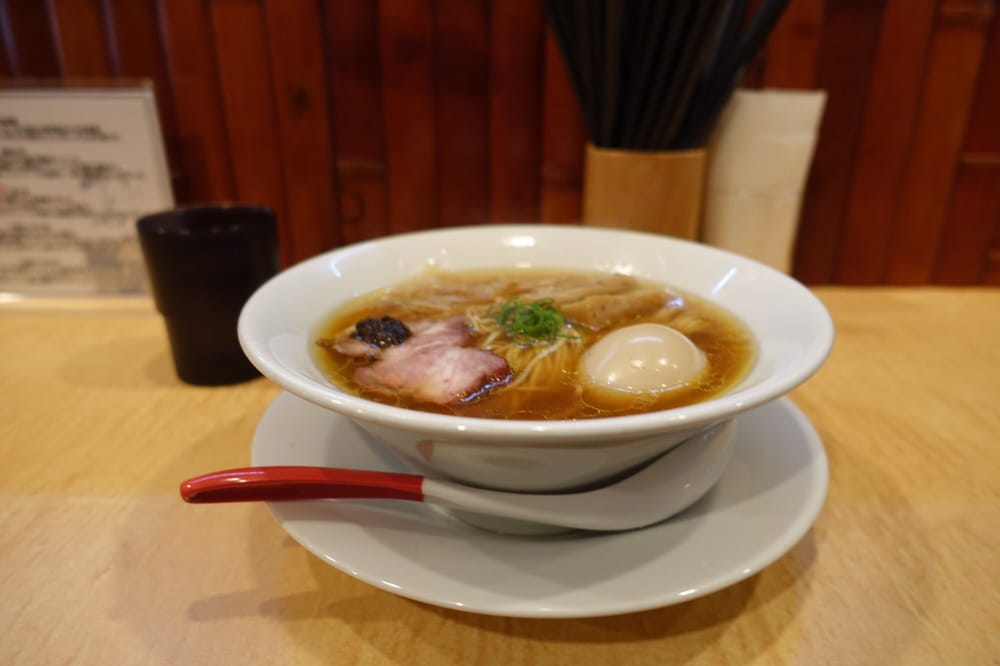
Have a Karaoke night
Did you know, Karaoke means empty orchestra in Japanese? You might have been to a work Karaoke night and saw your colleagues singing out loud on Britney Spears. Well, in Japan, Karaoke is taken very seriously. There are special soundproofed rooms you can rent with all the special equipment already there, so you can have a wonderful night with your friends and family.
For first timers, we recommend going to a well known chain like Shidax, Big Echo, Cote D’Azur or Karaokekan. Make sure you have a passport with you as usual, you will need to register for your first-time visit.
Good to know: Go for an all-inclusive plan which allows you to get unlimited drinks with your karaoke session.

See a Japanese fairytale village
One of the best out of this world experiences in Japan is seeing the sensational Shirakawa-go village located in Gifu Prefecture.
This beautiful fairytale village attracts over 1.8 million visitors a year. Shirakawa-go is covered in snow during winter, so make sure you plan your trip accordingly, depending on the type of photography that interests you the most.
Shirakawa-go features farmlands and thatched-roof houses, making this ancient village a UNESCO World Heritage Site. Today, 114 of these houses are still standing, some of which are hotels, restaurants, or houses for locals, so you will have plenty to do in the area.
Know that it takes over 5 hours to get to Shirakawa-go from Tokyo so this is not possible as a day trip. From our experience, we know that accommodation in the area books really fast and well in advance. Make sure you have your stay booked before making plans to visit.
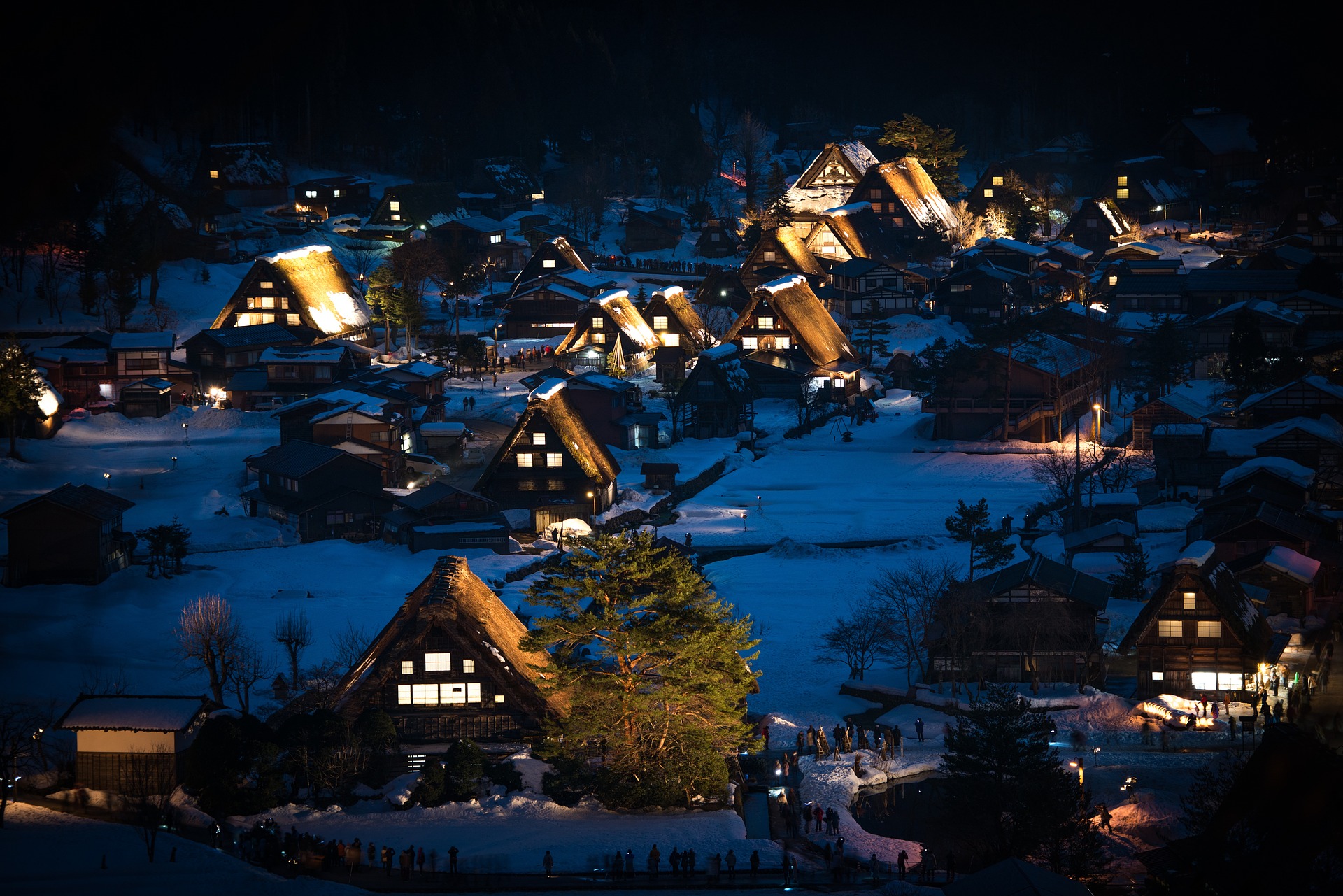
Visit the town of Hakone
Hakone is a well-known tourist town in Japan mainly for its stunning views of Mt Fuji but also because it’s a fantastic hot spring area.
It’s effortless to get from Tokyo to Hakone which is why many do Hakone as a day trip. Take the Shinkansen from Tokyo to Hakone and get there in a couple of hours.
We recommend staying the night in Hakone to experience a proper ryokan with an onsen. Rural Japan is a lot more laid back with traditional restaurants and kaiseki meals.
There are plenty of things to do in Hakone and here are some of our favourite activities:
- Eat a black egg – Hakone is well known for its black volcanic eggs. These eggs are boiled in the local hot springs so you can taste a Hakone delicacy. Locals have a saying that eating one of these eggs will add 7 years to your lifespan.
- Visit the Hakone open air museum – Hakone was the first to introduce the idea of an open-air museum. This is a great tourist attraction for art and outdoors lovers. Go there to see arts from Picasso, Henry Moore, Taro Okamoto, Yasuo Mizui, Churyo Sato, and many others, featuring over a thousand sculptures and works of art.
- Cruise Lake Aishi – Take advantage of the scenic crater lake with superb views over Mt. Fuji.
- Ride the Hakone Ropeway – The the gondola ride over the volcanic valley which links Sōunzan and Tōgendai via Ōwakudani.
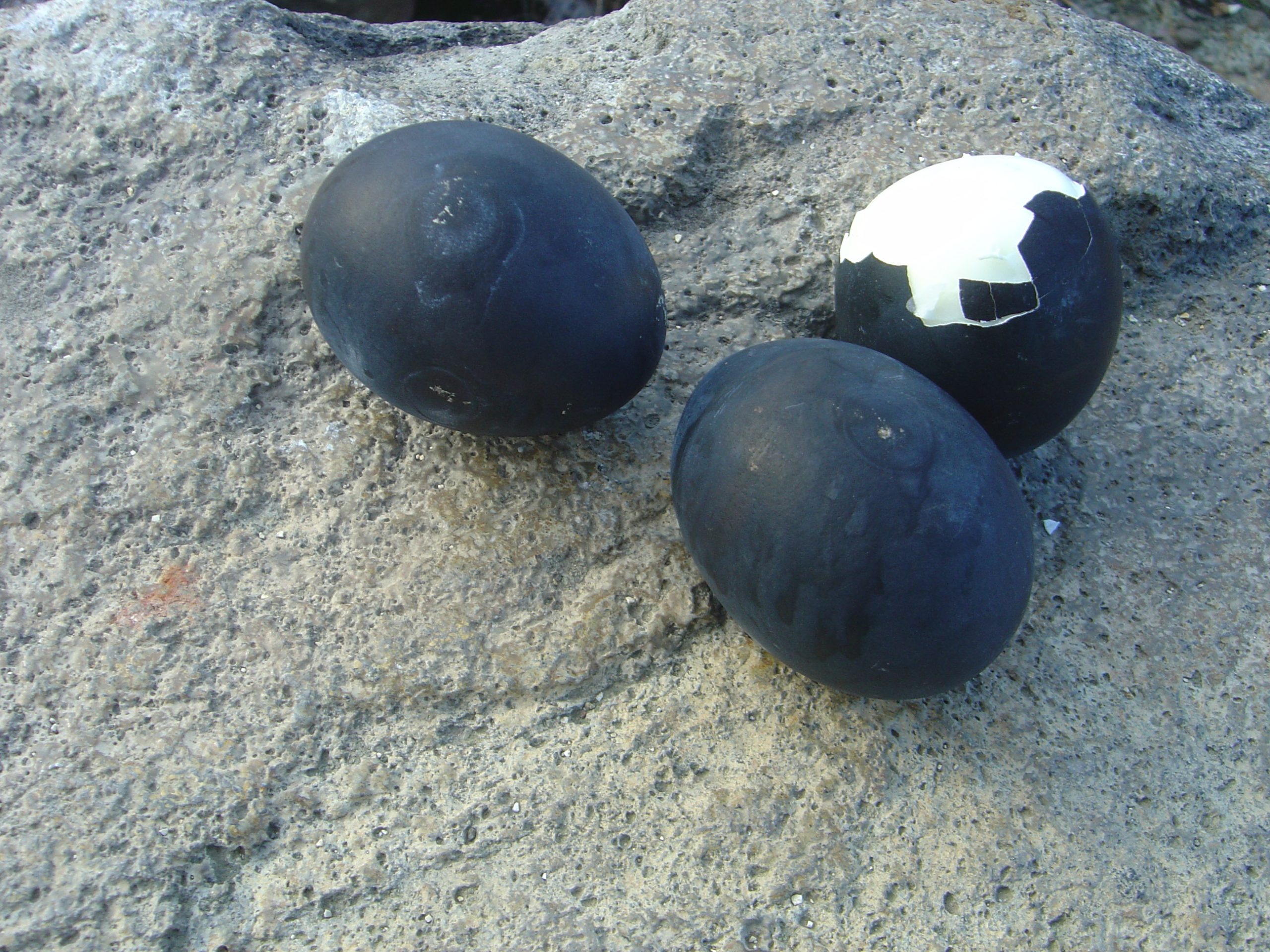
Grab a bento box
If you’re like us and always wanted to travel in a Shinkansen with a bento box, this is your sign to do it. Bento is a single-portion meal common in Japan, presented in a beautiful box, with all ingredients separated in small containers. A bento holds rice or noddles, fish or meat and pickled vegetables. And what’s best is that you can buy incredible ones from major train stations. Bento boxes are super popular for long Shinkansen journeys.
Some restaurants sell bento boxes for lunch, and we recommend trying an unagi bento box if you happen to visit Shibamata.
In Japan it is not unusual to see bento contests where bento arrangers compete with one another on the most aesthetically pleasing arrangements.
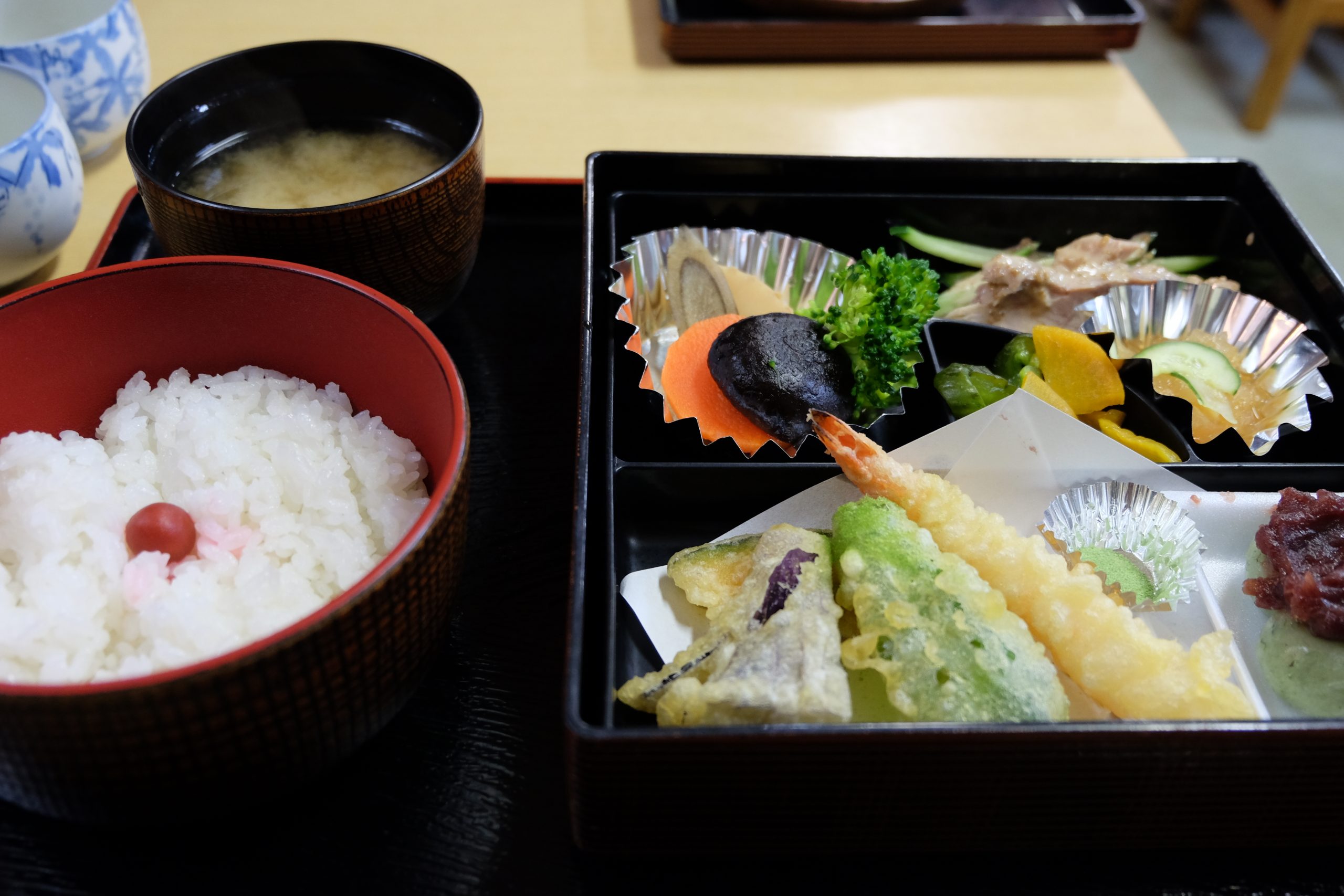
Tips for Japan
We visited Japan so many times and even lived in the country. We basically love Japan so much, we made it our mission to bring you the best tips to ensure your travels are well researched and fun.
We recommend reading how to plan for a trip to Japan and start as soon as possible. Not only that, but we put together a comprehensive guide explaining if Japan is expensive and breaking down the cost of a trip to Japan for two adults.
For first time visitors we recommend staying at least 2 weeks in Japan, but we put together a 7 day itinerary just in case you need a shorter break.
We have deeply researched accommodation guides:
For itineraries, take a look at the 7 day Tokyo itinerary, 5 day Kyoto itinerary and 4 Osaka itinerary.
Don’t miss our packing guides for Japan before your visit. Finally, there are so many beautiful places to visit in Japan, we know you’re going to love it. We are deeply, madly, in love with Japan, and we cannot wait to hear about your upcoming trip in the comments section below.
Frequently Asked Questions
What you shouldn’t miss in Japan?
Japan has so much more to offer and there are so many incredible experiences and attractions in Japan that you shouldn’t miss. Here ate my favourites, which I recommend to all first time visitors:
See Tokyo with its modern skyscrappers and really cool neon lights.
Visit Kyoto for its serene temples and traditional gardens.
Ascend Japan’s iconic mountain, either by climbing it or enjoying its beauty from surrounding areas like Hakone or the Fuji Five Lakes region.
Eat your way around Osaka, a city known as Japan’s kitchen, with plenty of delicious streetfood.
See the floating torii gate at Itsukushima Shrine on the beautiful Miyajima island.
Experience the relaxation and cultural significance of soaking in a traditional hot spring, such as those in Hakone, Kusatsu, or Beppu.
Immerse yourself in Japanese hospitality by staying at a ryokan, a traditional Japanese inn, and enjoy a kaiseki meal, tatami rooms, and soothing onsen baths.
What visitors should see or do in Japan?
There is much to do and see in Japan, I normally recommend spending at least 2 weeks to enjoy the following highlights:
Visit Tokyo and explore its cool and modern neighbourhoods. Walk around neon-lit streets and see this megapolis from above on top of many skyscrapers.
Discover the cultural heart of Japan by exploring Kyoto’s historic temples, such as Kinkaku-ji (Golden Pavilion) and Fushimi Inari Taisha, stroll through traditional gardens like Arashiyama Bamboo Grove and experience the traditional geisha district of Gion.
Attend a traditional tea ceremony, try on a kimono, visit a sumo stable to watch morning training, witness a kabuki or noh theater performance, or participate in a Zen meditation session.
Take in the beauty of Japan’s iconic Mount Fuji, whether by climbing it (during the climbing season), admiring it from nearby lakes like Lake Kawaguchi, or viewing it from viewpoints like Hakone or the Chureito Pagoda.
Relax in the therapeutic hot springs of onsen towns like Hakone, Kusatsu, or Beppu, and immerse yourself in the calming atmosphere of traditional Japanese inns (ryokans).
Explore Japan’s impressive castles like Himeji Castle, known for its elegant white exterior, and Matsumoto Castle, one of Japan’s most beautiful original castles.
Eat lots of Japanese foods, including sushi, ramen, tempura, wagyu beef, kaiseki (traditional multi-course meal), street food, and regional specialities like Hiroshima-style okonomiyaki or Osaka-style takoyaki.
What is Japan very famous for?
Japan is renowned for its technological innovation, captivating the world with advancements in electronics and robotics. Its anime and manga have garnered global popularity, while traditional arts and crafts like calligraphy and pottery showcase the country’s rich cultural heritage.
The beauty of cherry blossoms captivates visitors, and Japanese foods delight with meticulous preparation and fresh flavours. The efficient bullet train system, along with the country’s vibrant pop culture, has left an indelible mark. Moreover, Japan’s people are admired for their politeness and hospitality, making it a welcoming destination for travellers from around the globe.
Where should I go in Japan for the first time?
For a first-time visit to Japan, Tokyo, Kyoto, and Osaka are a must. Tokyo is the perfect blend of modernity and tradition, with iconic landmarks like Shibuya Crossing, Meiji Shrine and Senso-ji. Kyoto, the cultural heart, is so beautiful with historic temples like Kinkaku-ji and the enchanting geisha district of Gion. Osaka, renowned for its lively atmosphere and food culture, is a culinary paradise with its delicious street food scene in Dotonbori.

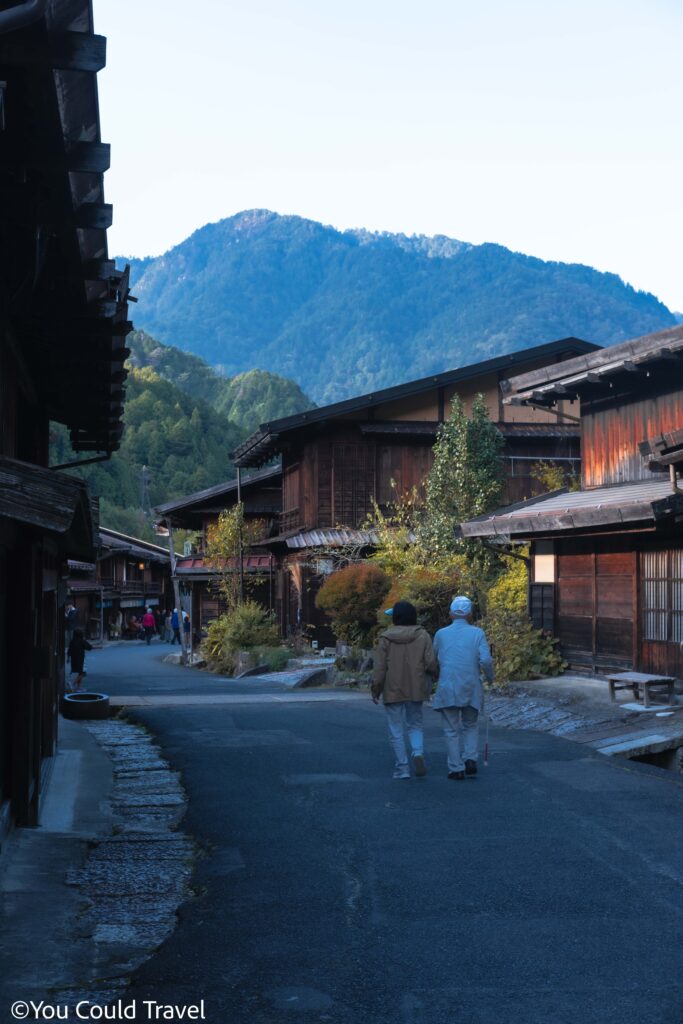
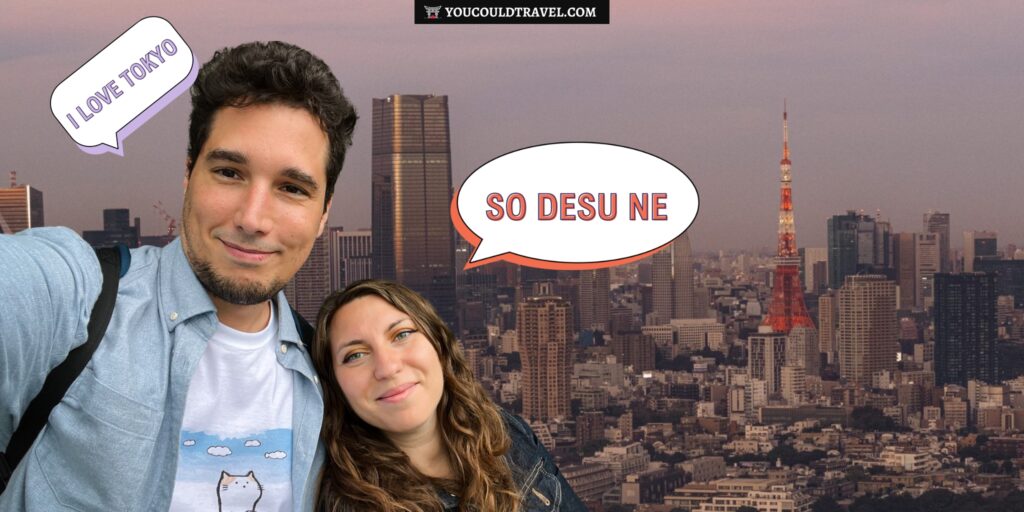
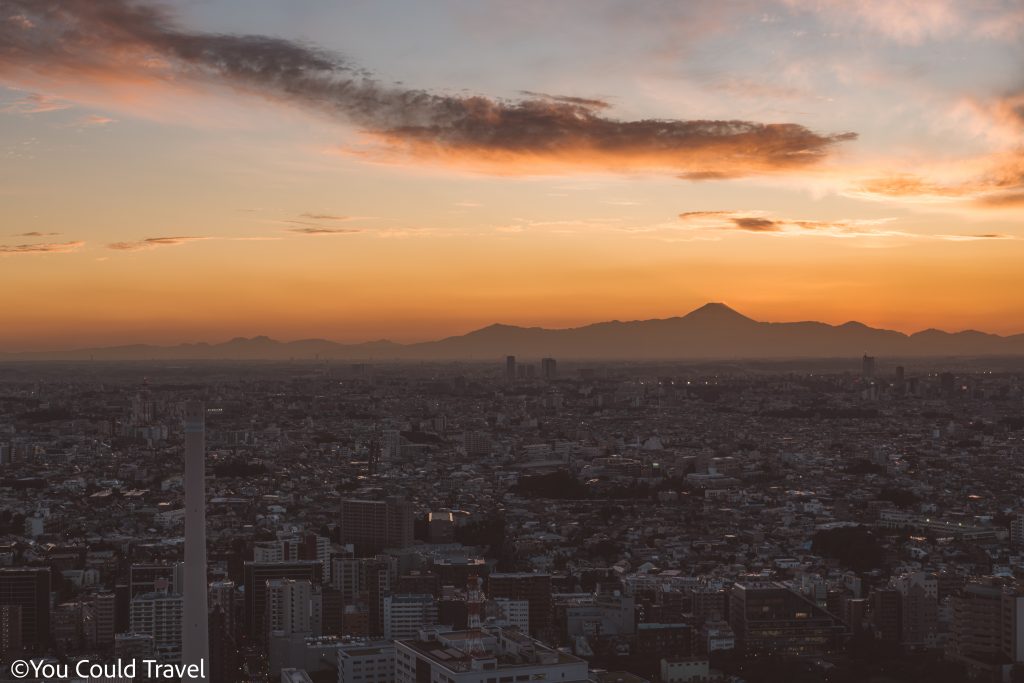
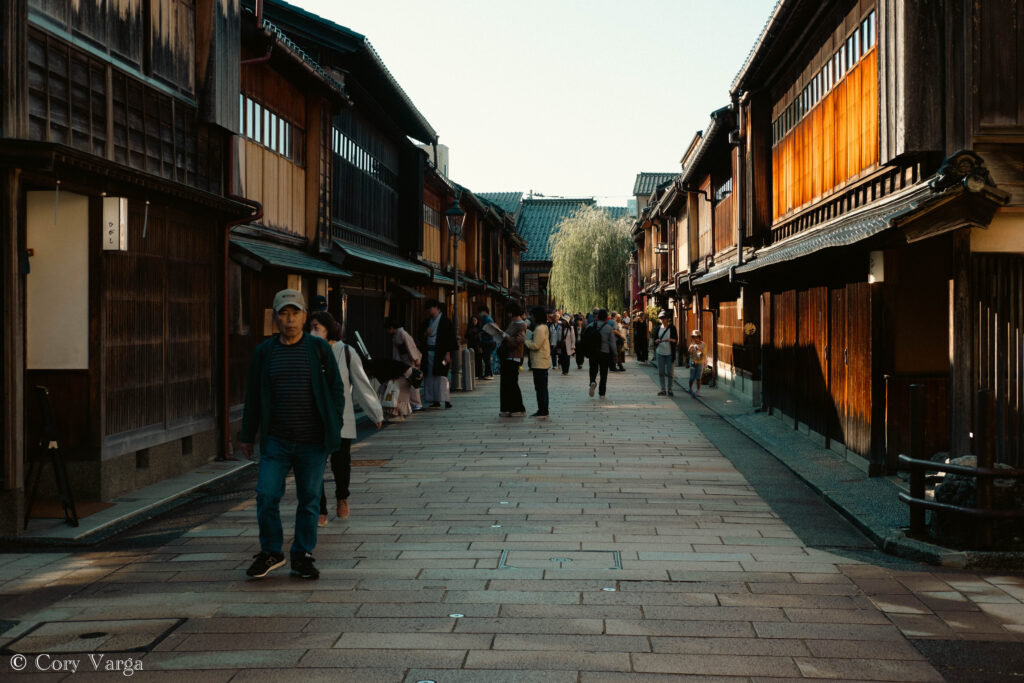
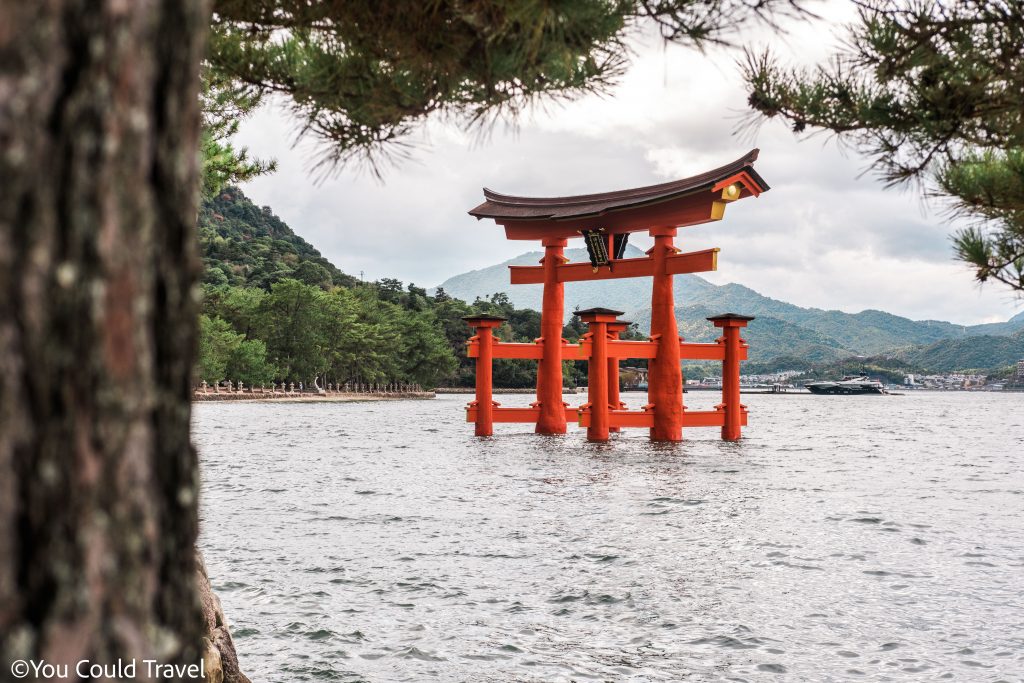
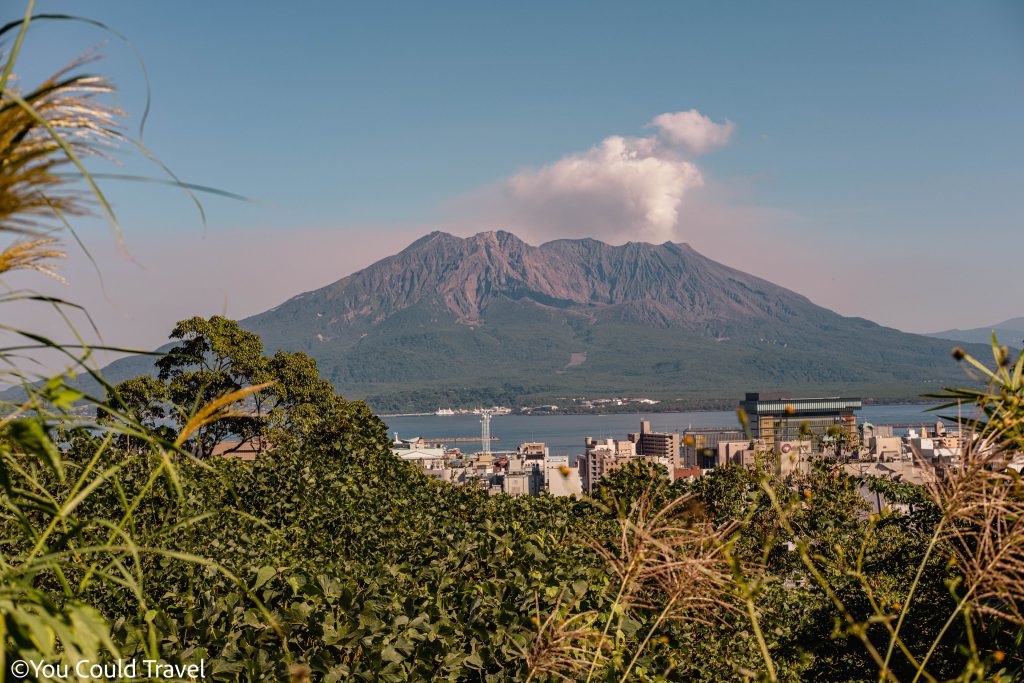


Leave a Reply